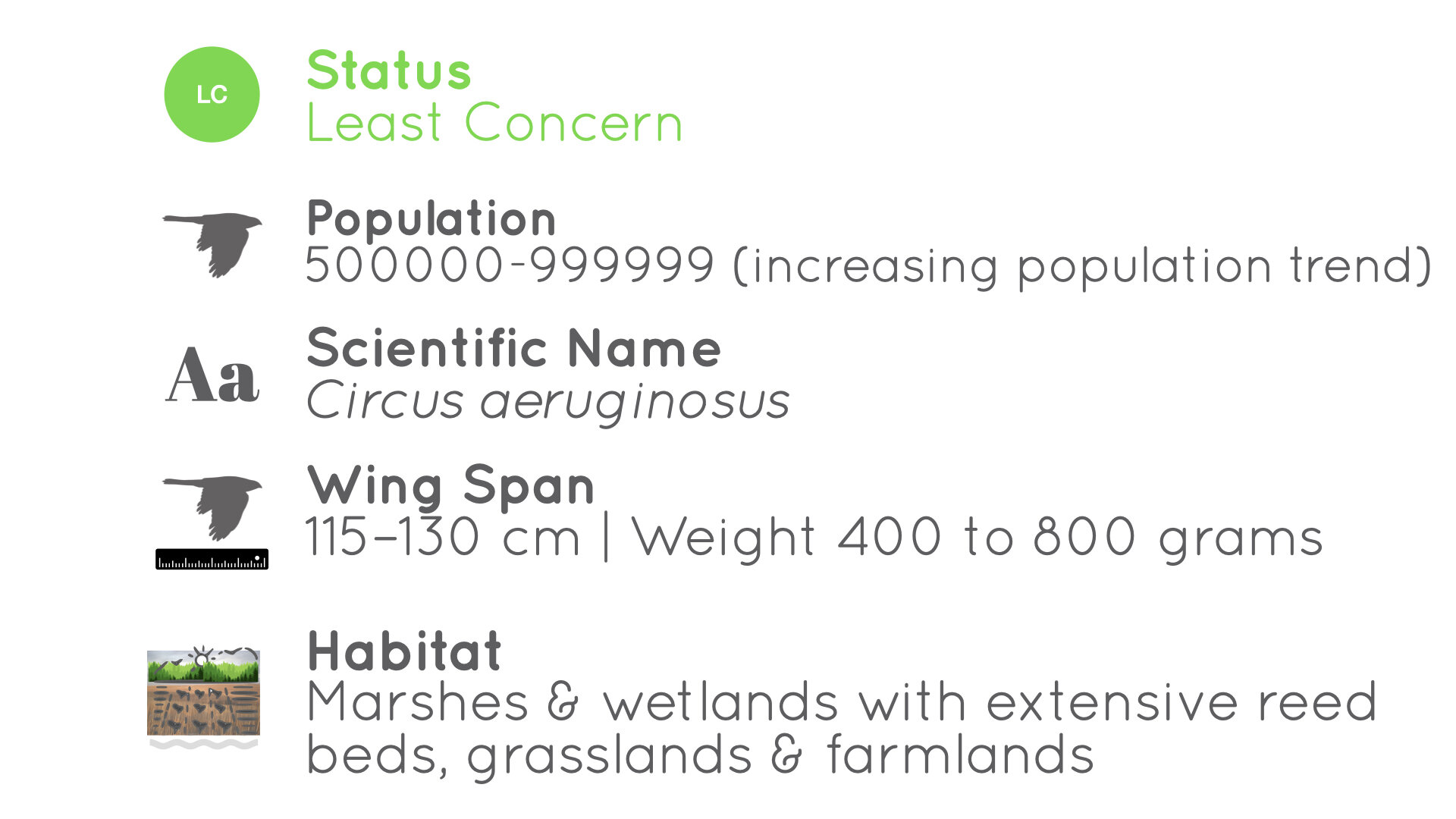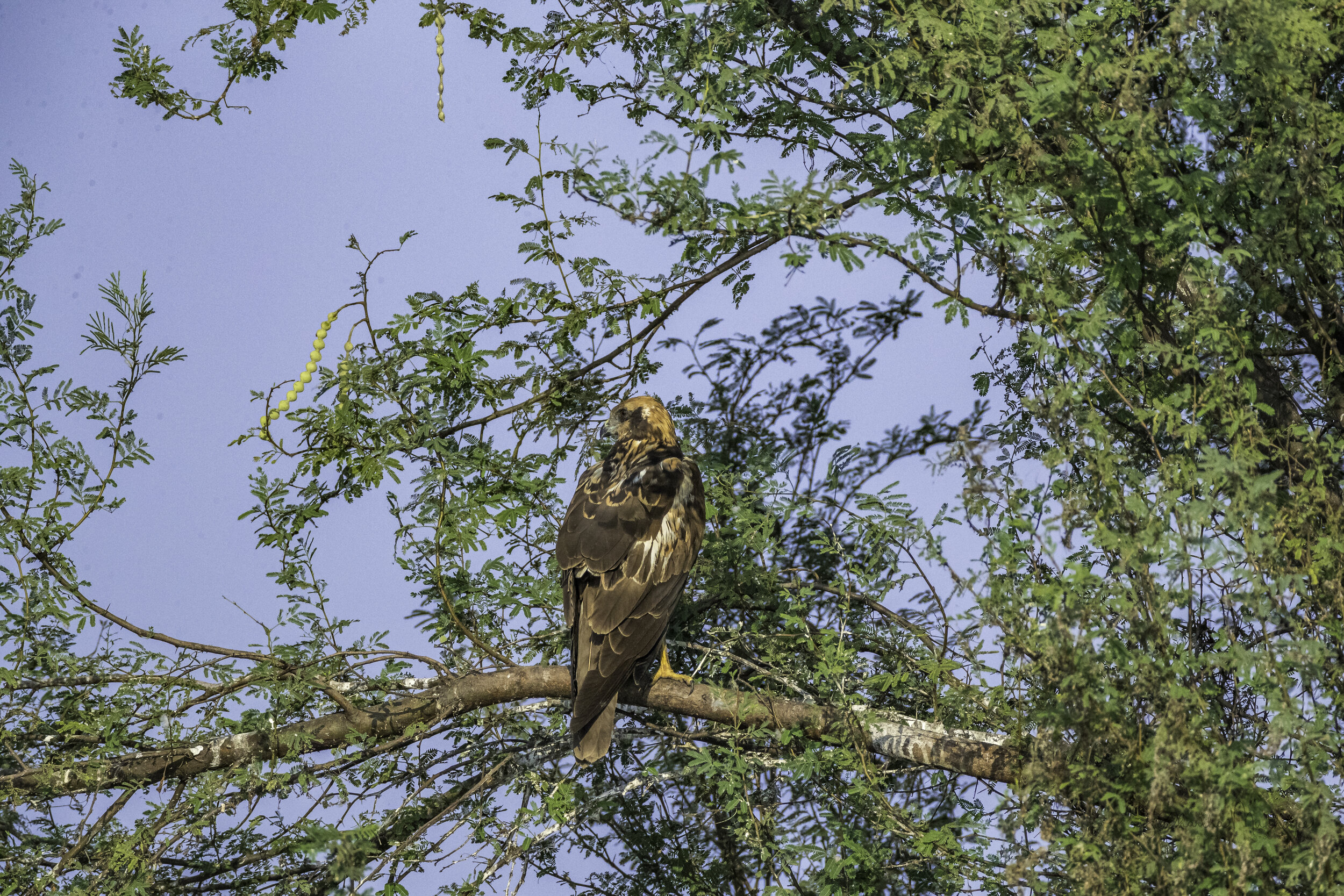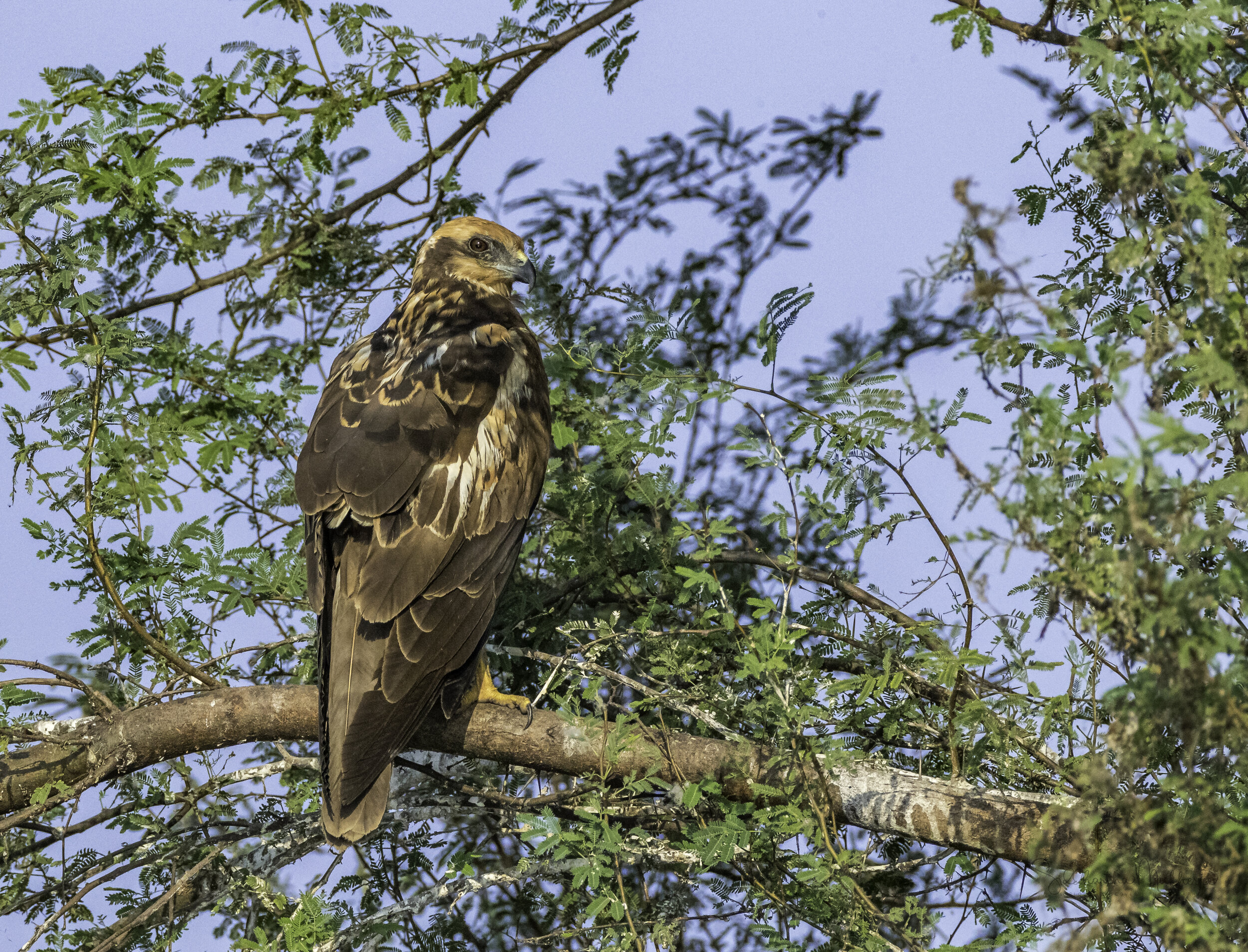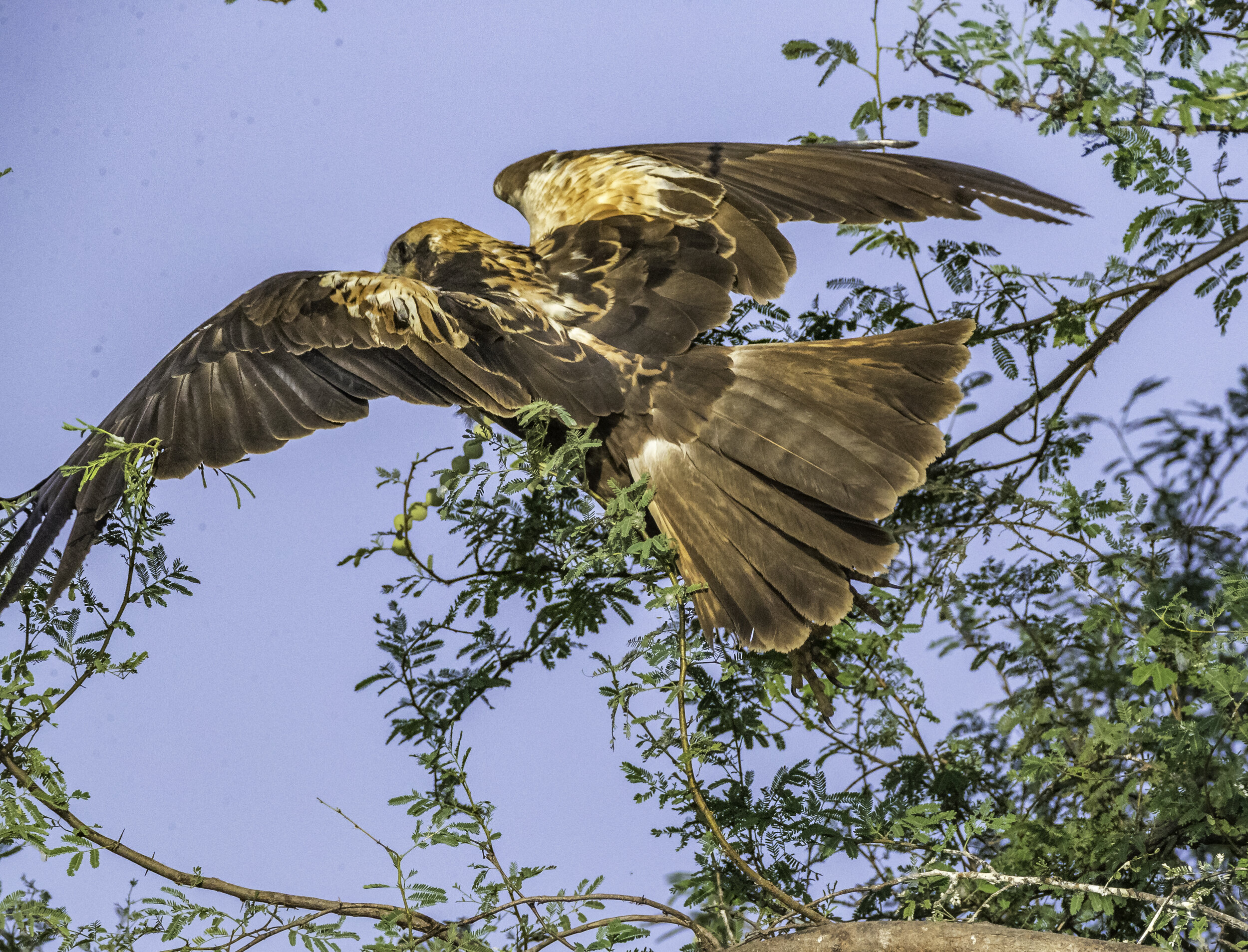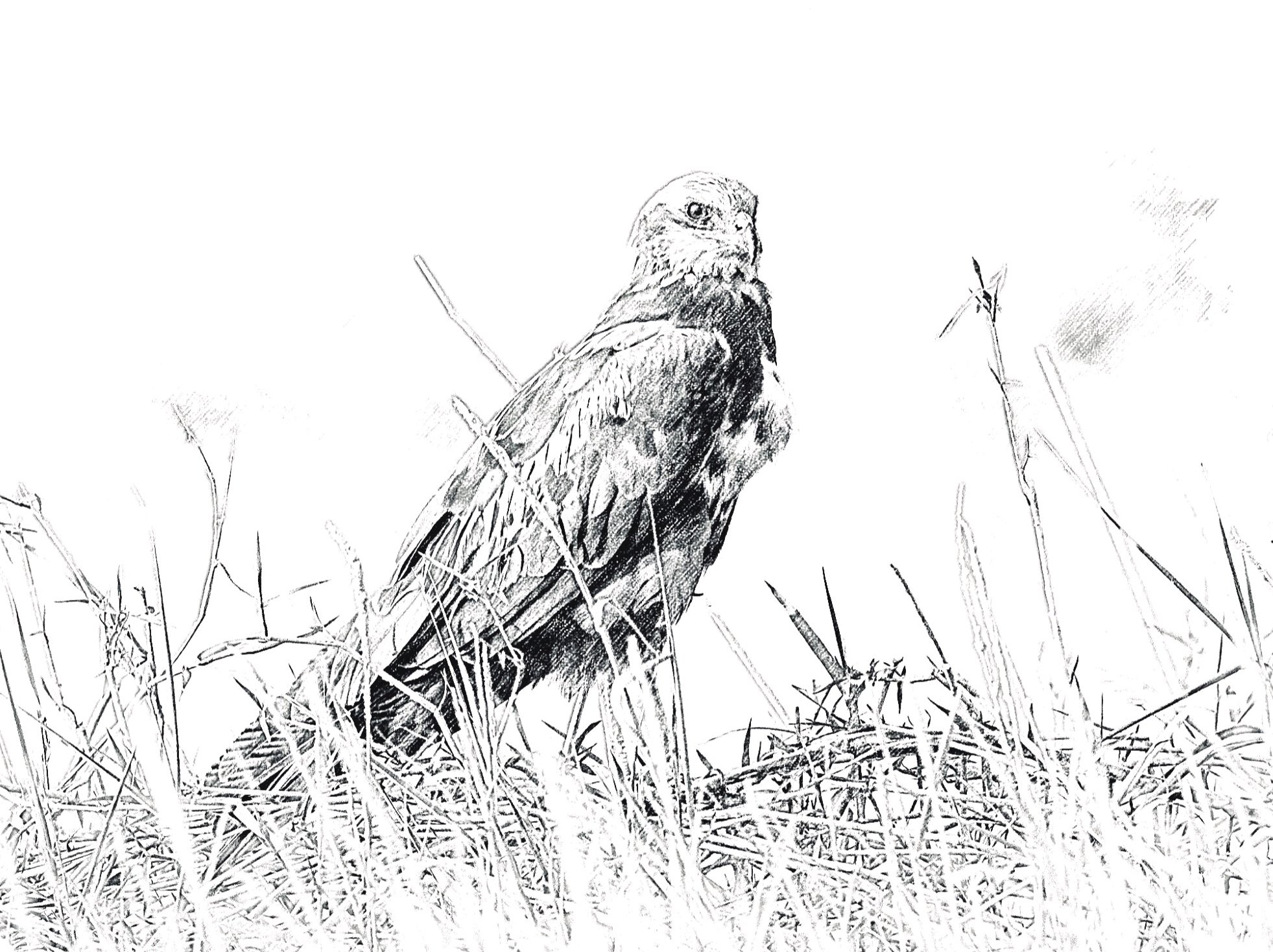Eurasian Marsh Harrier
Circus aeruginosus
The harriers of Kumbhargaon
The third of a three harrier series.
Bhigwan Bird Sanctuary
After the Pallid Harrier, and the Montagu’s Harrier, this third and final chapter is on the beautiful Eurasian Marsh Harrier. Also known as the Western Marsh Harrier, it is a large harrier, a bird of prey from temperate and subtropical western Eurasia and adjacent Africa. As stated earlier the genus name Circus is derived from the Ancient Greek kirkos, referring to a bird of prey named for its circling flight (kirkos, "circle"), probably the hen harrier. The specific aeruginosus is Latin for "rusty". The western marsh harrier is often divided into two subspecies, the widely migratory Circus aeruginosus aeruginosus which is found across most of its range, and Circus aeruginosus harterti which is resident all-year in north-west Africa.
To the south of Bhigwan, bereft of any hills, lie the wide Ujni backwater wetlands, a shallow waste water reserve formed by the discharge of water from the Pune region dams. Surrounding this lush ecosystem are the rich grasslands and fertile farms home to an impressive list of birds, mammals and reptiles. The area around these backwaters are also unique with rich farmlands and dry deciduous scrub forest with interspersed grasslands. Home to an impressive list of birds, mammals and reptiles they protect many mammals like the Chinkara, Hyena, Wolf and Indian fox and are also popular for grassland birds and the birds of prey, including the magnificent eagles I’ve talked about in earlier blogs.
Read about the eagles of Kumbhargaon here:
The endangered Steppe Eagle,
The vulnerable Greater Spotted Eagle and
The rare & also vulnerable Eastern Imperial Eagle.
The harriers are any of the several species of diurnal hawks sometimes placed in the subfamily Circinae of the bird of prey family Accipitridae. They characteristically hunt by flying low over open ground, feeding on small mammals, reptiles, or birds. The young of the species are sometimes referred to as ring-tail harriers. They are distinctive with long wings, a long narrow tail, the slow and low flight over grasslands and skull peculiarities. The harriers are thought to have diversified with the expansion of grasslands and the emergence of C4 grasses about 6 to 8 million years ago during the Late Miocene and Pliocene
The genus Circus was introduced by the French naturalist Bernard Germain de Lacépède in 1799. Most harriers are placed in this genus. The word Circus is derived from the Ancient Greek kirkos, referring to a bird of prey named for its circling flight (kirkos, "circle"), probably the hen harrier. The name harrier is thought to have been derived either from Harrier (dog), or by a corruption of harrower, or directly from harry. Ring-tail is an informal term used by birders for the juveniles and females of several harrier species when seen in the field and not identifiable to an exact species. Ring-tail harriers include the juveniles and females of Montagu's harrier (Circus pygargus), Hen harrier (Circus cyaneus), and the Pallid harrier (Circus macrourus).
During our time here we were hosted by and had the expert help of Sandip Nagare and his team of knowledgeable guides from the Agnipankha Bird Watcher group, especially Ganesh Bhoi, who went out of their way to ensure we had fantastic opportunities to explore, discover, observe & photograph over 82 species of birds and wildlife including some rare ones. We stayed at Sandip’s homestay of the same name and had the added pleasure of indulging in delectable home cooked food.
With that as the prelude I have this blog on the Eurasian Marsh Harrier as the third and final chapter of a three part series on the harriers of the Kumbhargaon grasslands. If you haven’t already, read the first two chapters on the Pallid Harrier and the Montagu’s Harrier.
‡‡‡‡‡
The Eurasian Marsh Harrier
The Eurasian Marsh harrier (Circus pygargus) is a gangly raptor with long wings and tail usually seen in marshes and wetlands with extensive reed beds. As with the other harriers it is mainly seen in flight, quartering fairly low over marshes, with wings raised in a shallow V. The commonest plumage is dark brown overall with a variable creamy cap, throat, and narrow leading edge to wing. The brightest adult males have tricolored upperwings, grayish tail, pale head and breast contrasting with rusty-brown belly. It is extremely similar to and closely related Eastern Marsh-Harrier; males of that species are darker-headed and browner-chested, and females are warmer brown and streakier on the chest, without the Eurasian's discrete white 'cap' and dark line through the eye.
Eurasian Marsh Harrier Range
It is a large, bulky harrier (larger than other European harriers but slightly smaller than the eastern marsh harrier) with fairly broad wings, and has a strong and peculiar sexual dichromatism. The male's plumage is mostly a cryptic reddish-brown with lighter yellowish streaks, which are particularly prominent on the breast. The head and shoulders are mostly pale greyish-yellowish. The rectrices and the secondary and tertiary remiges are pure grey, the latter contrasting with the brown forewing and the black primary remiges at the wingtips. The upperside and underside of the wing look similar, though the brown is lighter on the underwing. Whether from the side or below, flying males appear characteristically three-colored brown-grey-black. The legs, feet, irides and the cere of the black bill are yellow.
The female is almost entirely chocolate-brown. The top of the head, the throat and the shoulders have of a conspicuously lighter yellowish colour; this can be clearly delimited and very contrasting, or (particularly in worn plumage) be more washed-out, resembling the male's head colours. But the eye area of the female is always darker, making the light eye stand out, while the male's head is altogether not very contrastingly coloured and the female lacks the grey wing-patch and tail. Juveniles are similar to females, but usually have less yellow, particularly on the shoulders. There is a rare hypermelanic morph with largely dark plumage. It is most often found in the east of the species' range. Juveniles of this morph may look entirely black in flight.
This species has a wide breeding range from Europe and northwestern Africa to Central Asia and the northern parts of the Middle East. It breeds in almost every country of Europe but is absent from mountainous regions and subarctic Scandinavia. Most populations of the western marsh harrier are migratory or dispersive. Some birds winter in milder regions of southern and western Europe, while others migrate to the Nile basin and Great Lakes region in Africa, or to Arabia, the Indian subcontinent, and Myanmar. The all-year resident subspecies harterti inhabits Morocco, Algeria, and Tunisia.
Like the other marsh harriers, it is strongly associated with wetland areas, which is where we spotted it, especially those rich in common reed (Phragmites australis). It can also be met with in a variety of other open habitats, such as farmland and grassland, particularly where these border marshland. It is a territorial bird in the breeding season, and even in winter it seems less social than other harriers, which often gather in large flocks. But this might be simply due to habitat preferences, as the marsh harriers are completely allopatric while several of C. aeruginosus grassland and steppe relatives winter in the same regions and assemble at food sources such as locust outbreaks. Still, in the Keoladeo National Park of Rajasthan around a 100 Eurasian marsh harriers were observed to roost together each November/December; they assemble in tall grassland dominated by Desmostachya bipinnata and vetiver (Chrysopogon zizanioides), but where this is too disturbed by human activity they will use floating carpets of common water hyacinth instead – the choice of such roost sites may be to give early warning of predators, which will conspicuously rustle through the plants if they try to sneak upon the resting birds
This species has an extremely large range, and hence does not approach the thresholds for Vulnerable under the range size criterion (Extent of Occurrence <20,000 km² combined with a declining or fluctuating range size, habitat extent/quality, or population size and a small number of locations or severe fragmentation). The population trend appears to be increasing, and hence the species does not approach the thresholds for Vulnerable under the population trend criterion (>30% decline over 10 years or three generations). The population size is very large, and hence does not approach the thresholds for Vulnerable under the population size criterion (<10,000 mature individuals with a continuing decline estimated to be >10% in 10 years or three generations, or with a specified population structure). For these reasons the species is evaluated as Least Concern.
‡‡‡‡‡
The following are some photos of the Eurasian Marsh Harrier recorded on the Ujni Backwaters. We saw the harrier in three stages starting with our first sighting in the reeds at the far end of the backwaters. Our guide Ganesh Bhoi spotted it from almost a kilometer away and we couldn’t see it even when he pointed it out to us.
And as we watched it spun around and started to hunt. I think it was a rat or a mole - something small and from where we were in the boat we couldn’t make it out.
This was a little tilted because the boat was swaying.
And then something spooked the harrier - maybe it was a creak from our oars as we inched closer. It took off, flying low over the reeds to perch again about 50 meters away and to try and finish its meal in peace.
The following photos were as it flew to its new perch and the wire mesh boxes seen on strewn around are not cages but ingenious devices the local fishermen use to catch their fish.

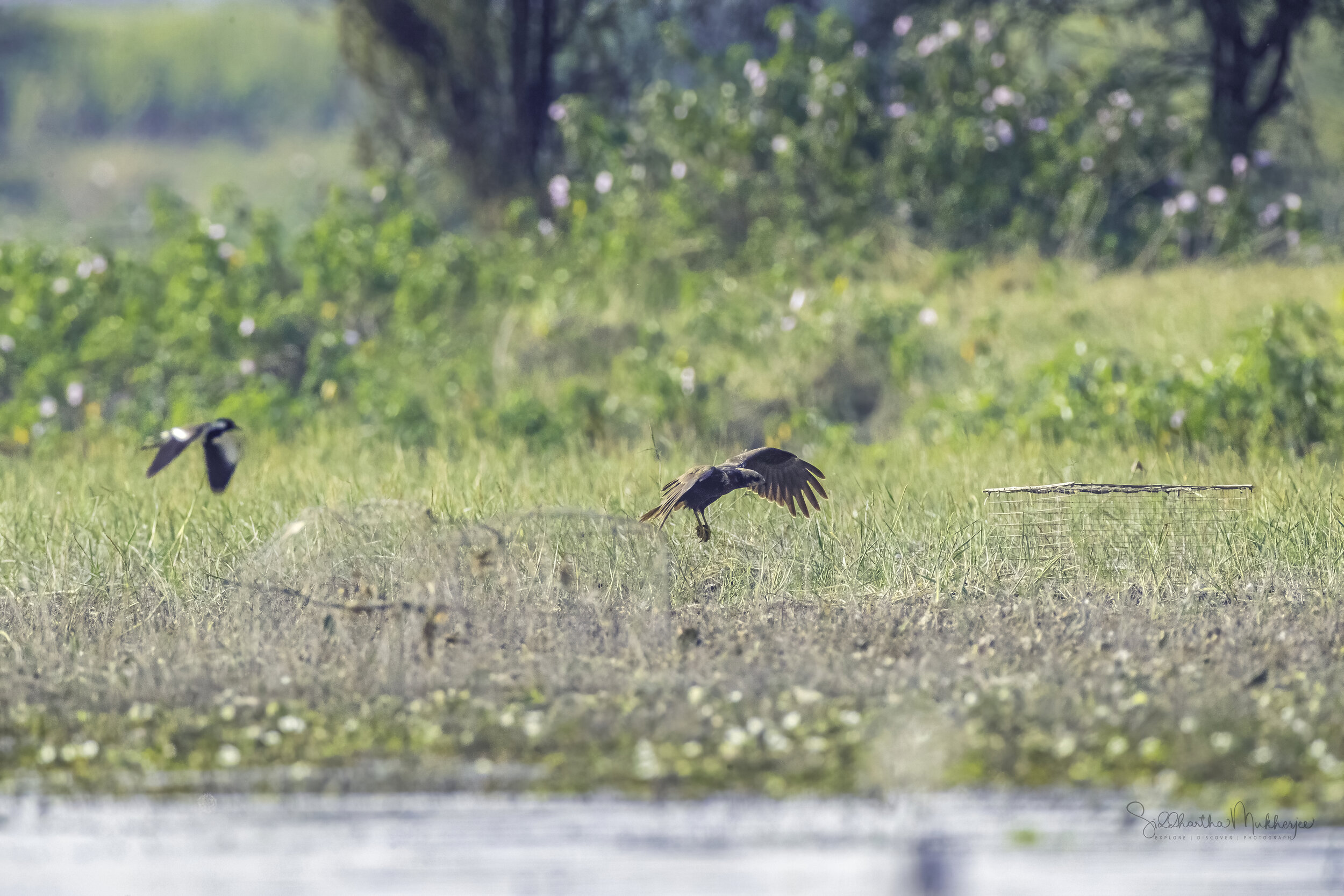
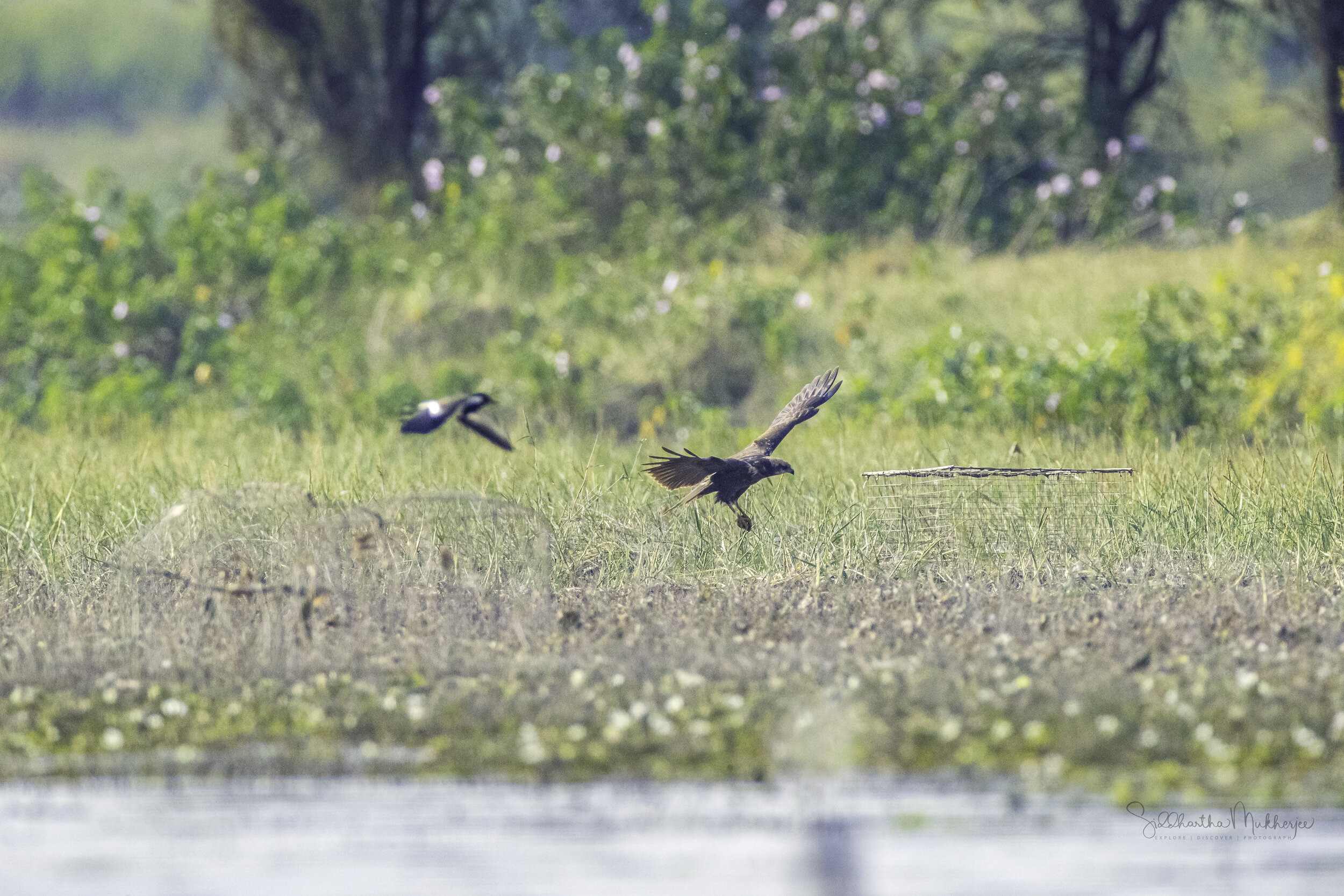
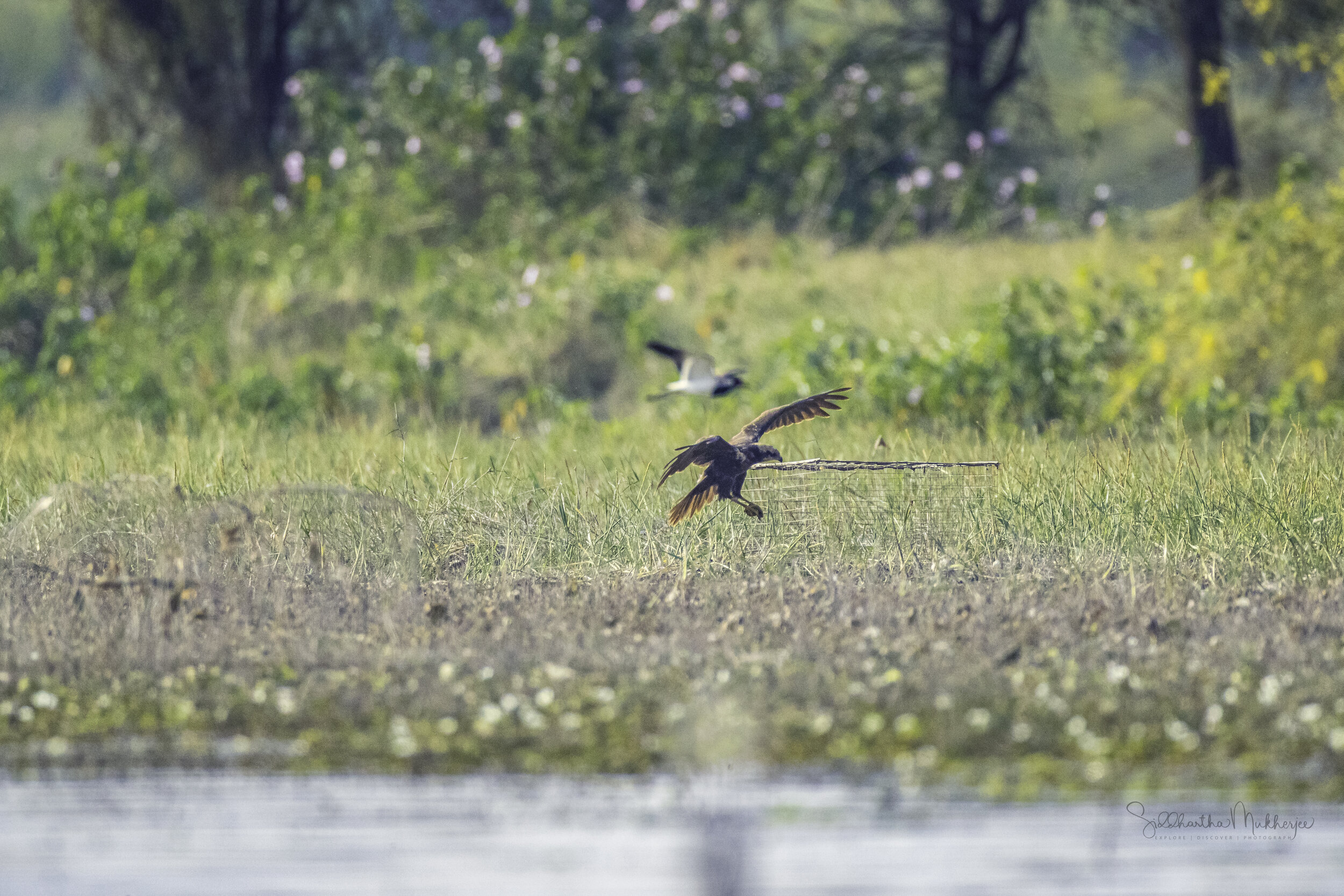
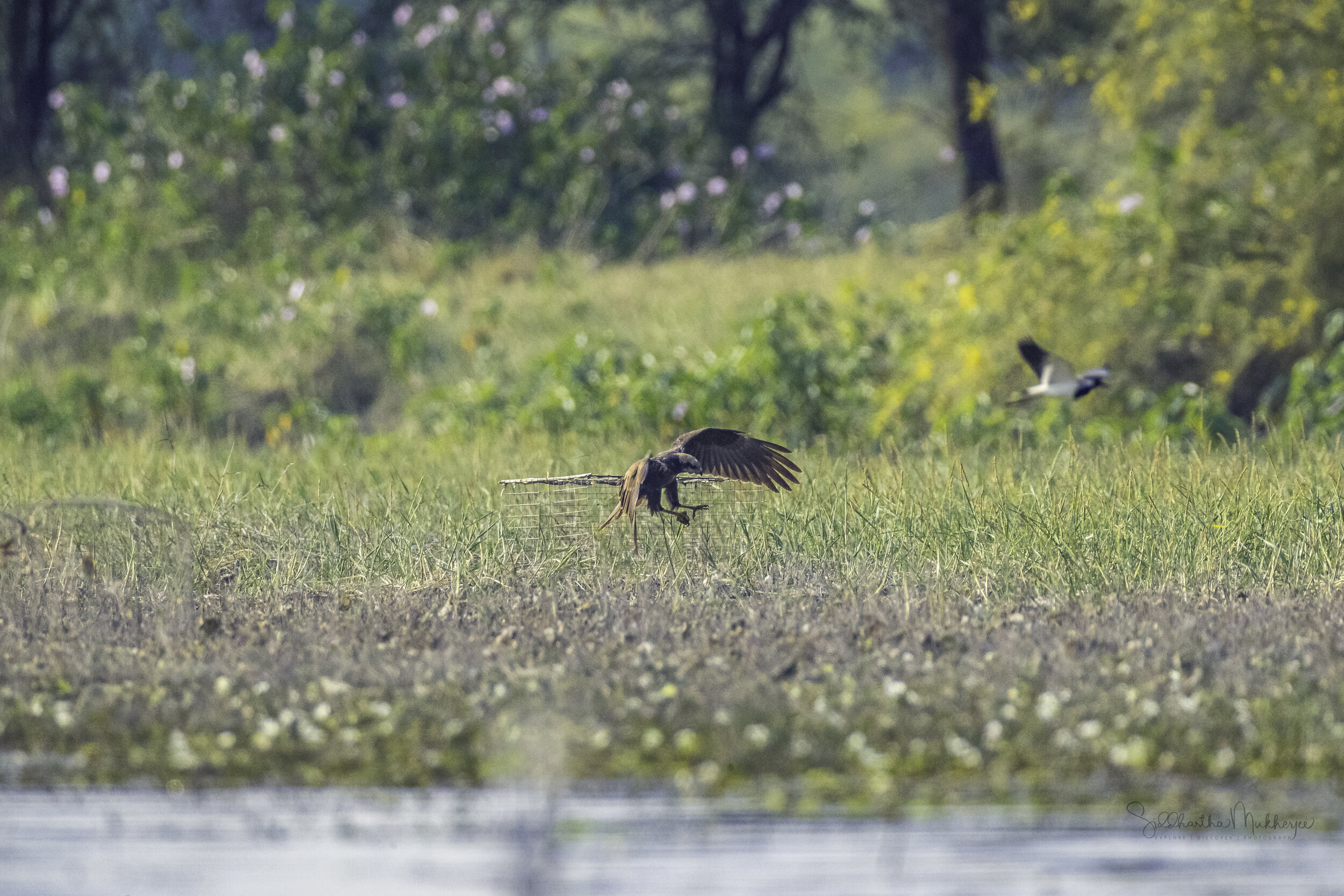
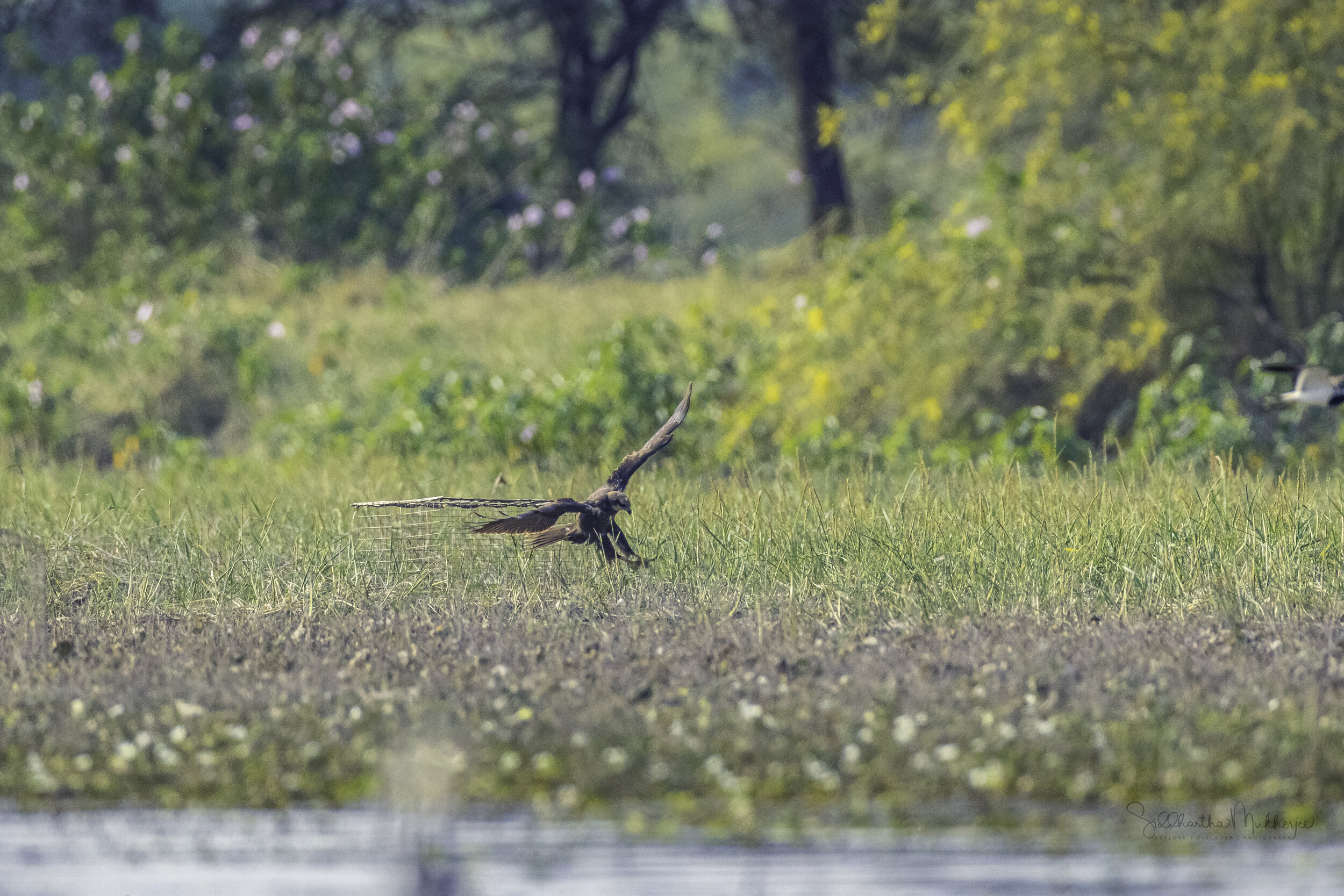
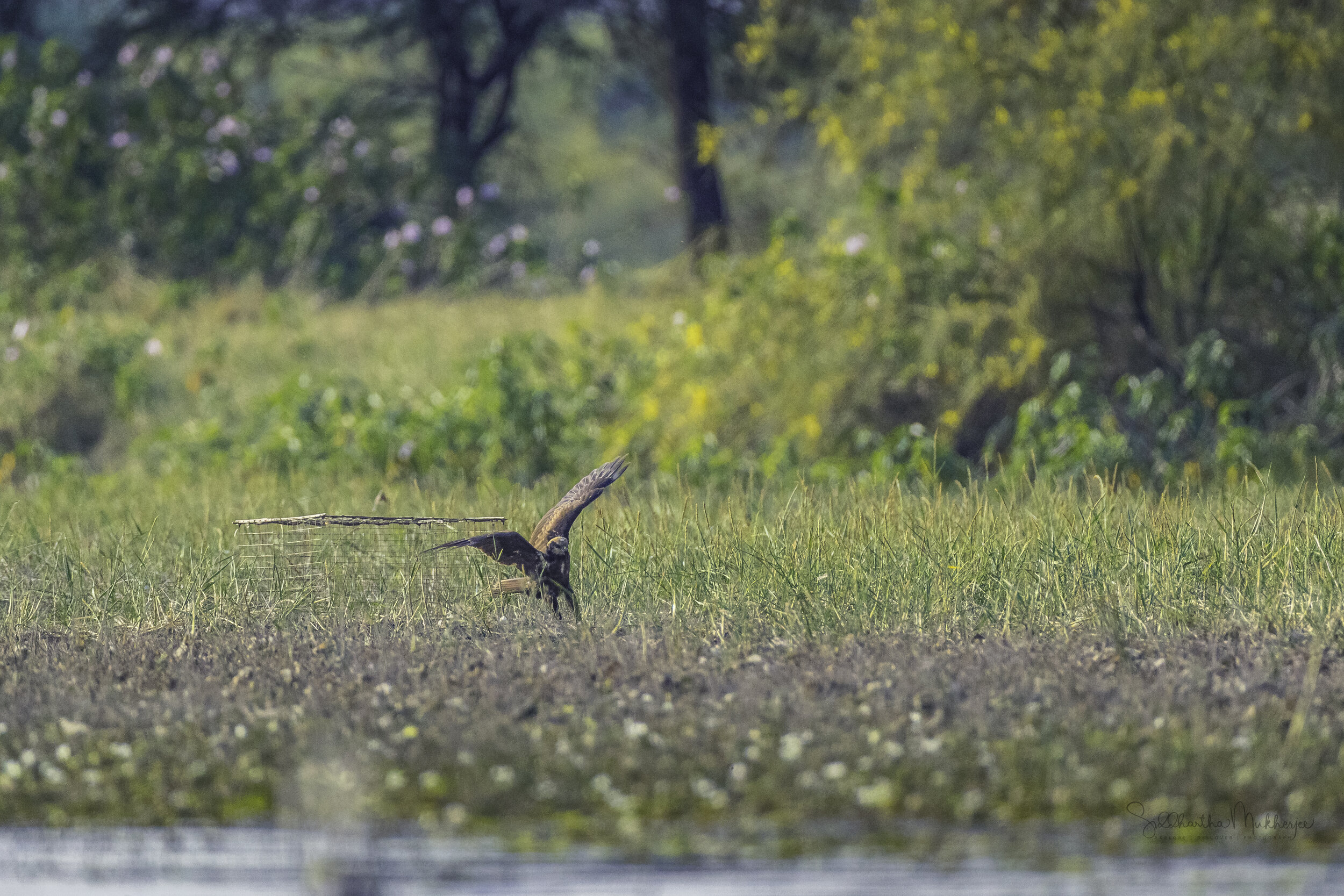
The following photos are the second stage of our sighting when it finished its meal and flew to a nearby tree. It perched quite high and kept a wary eye on us as we tried to row closer. We managed to get to within 25 meters when it took off again to fly some distance off and perch on a rock hidden in the reeds.
A Harrier Panorama
A three photo panorama of the harrier as it took off over the marshland. The image is interactive so feel free to zoom in and view the details.
Tracking the Harrier
The following sequence of photos were taken as the harrier took off from its perch on the tree and made its way to a rock hidden among the reeds - a beautiful graceful glide over the marshland. And somewhere mid-flight it picked up the pace and I had to reframe fairly quickly.
I have tried to make it feel like a stop motion clip to highlight the adjustments the bird makes as it flies.
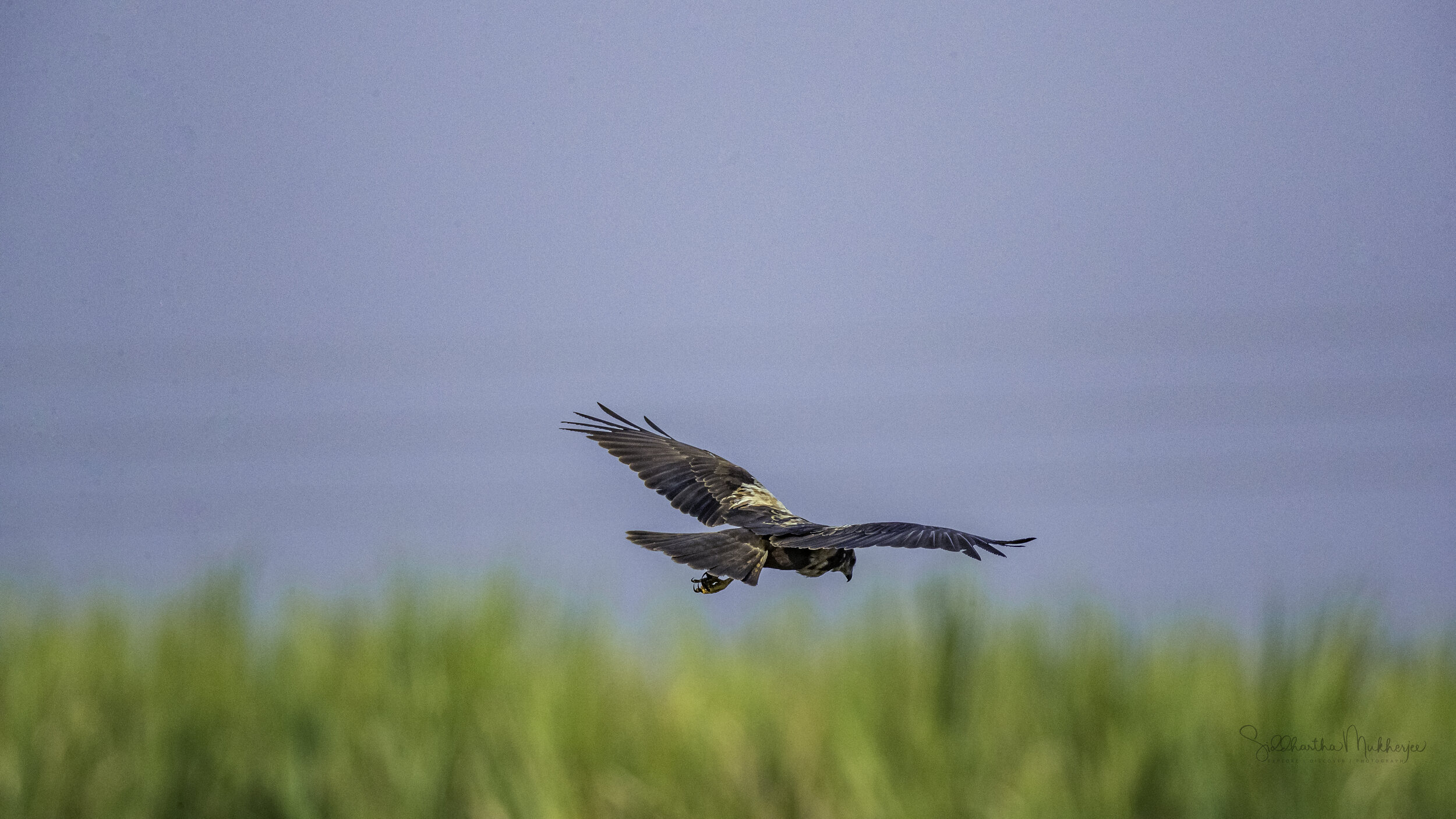
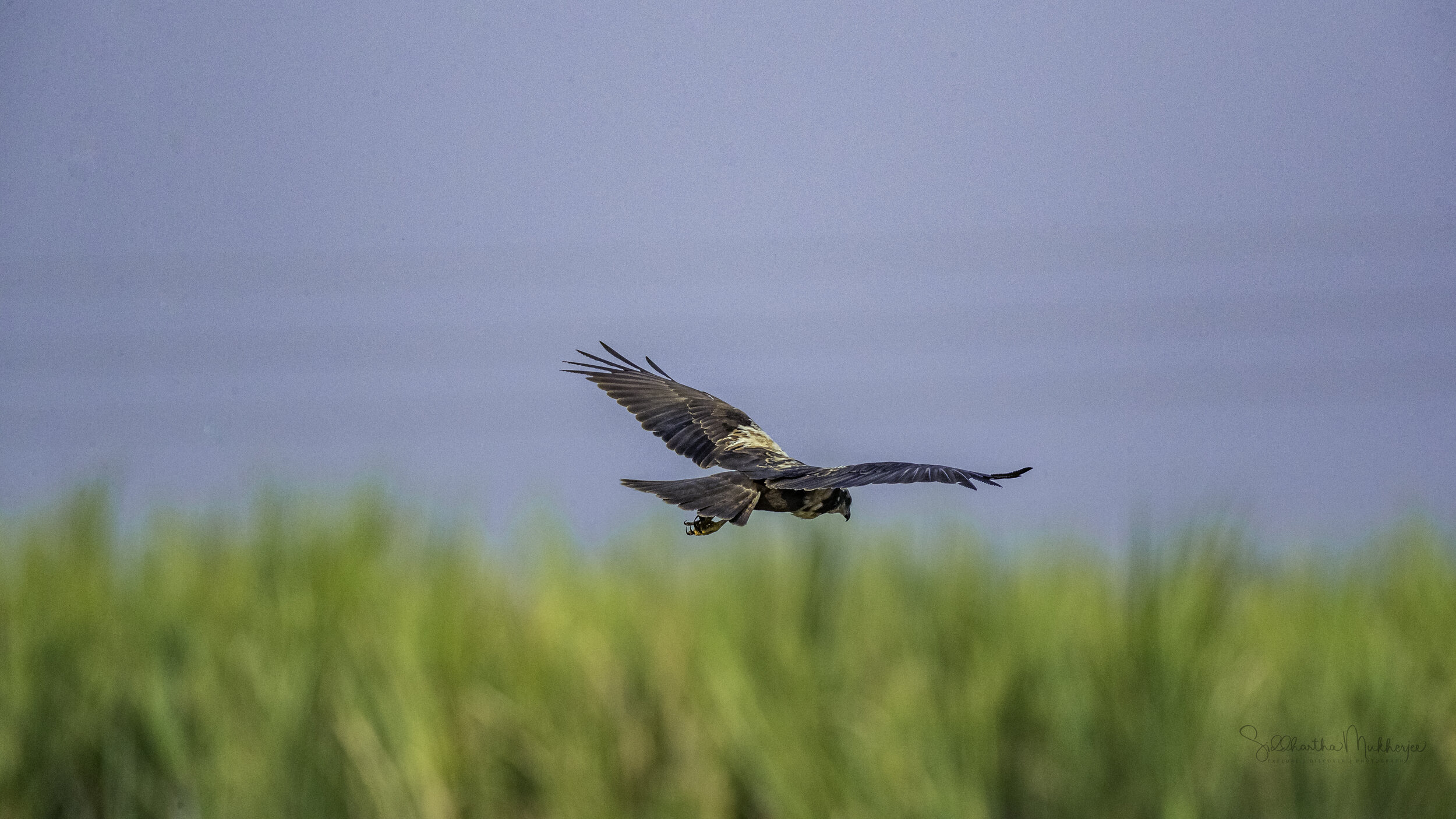
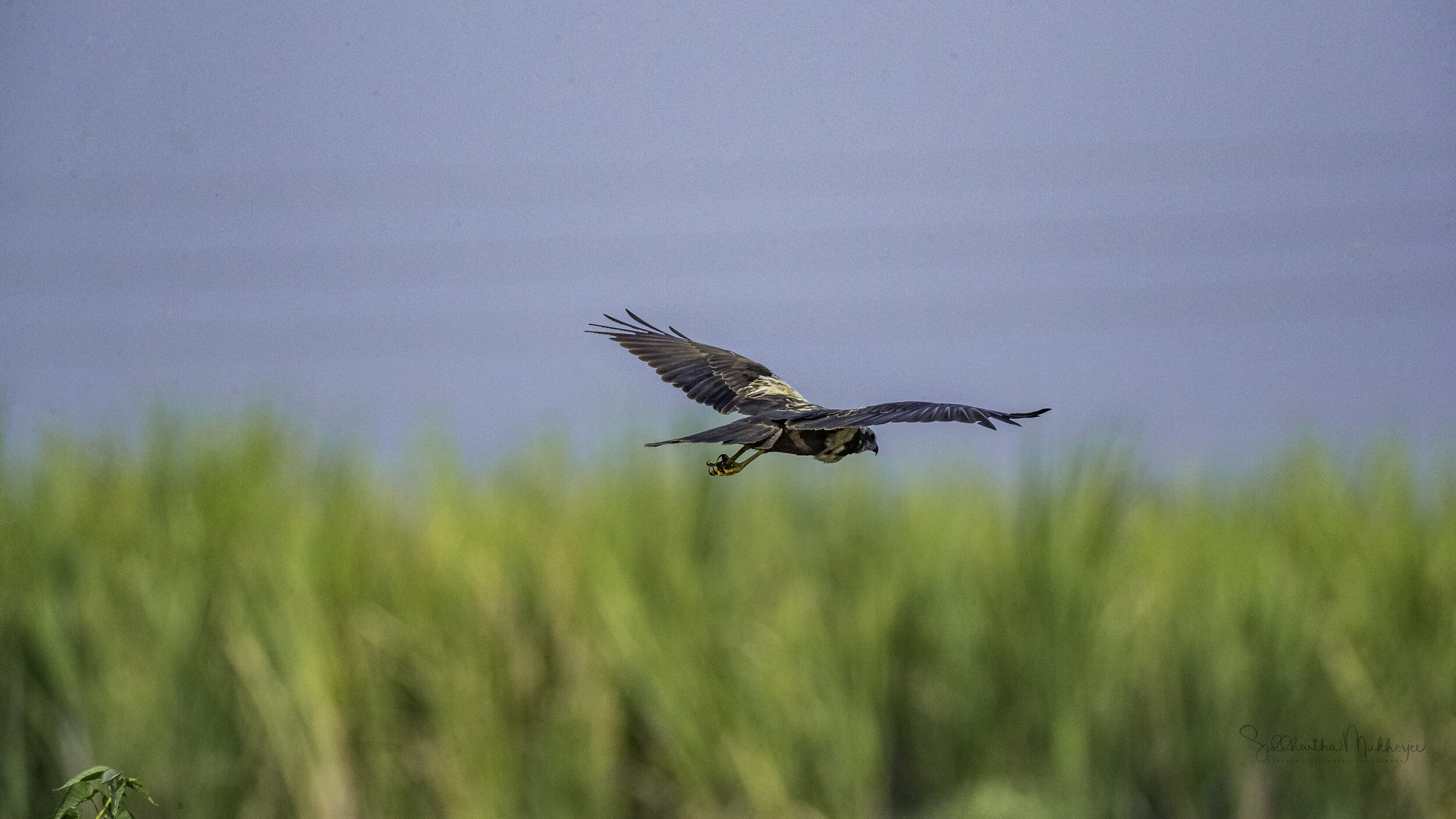
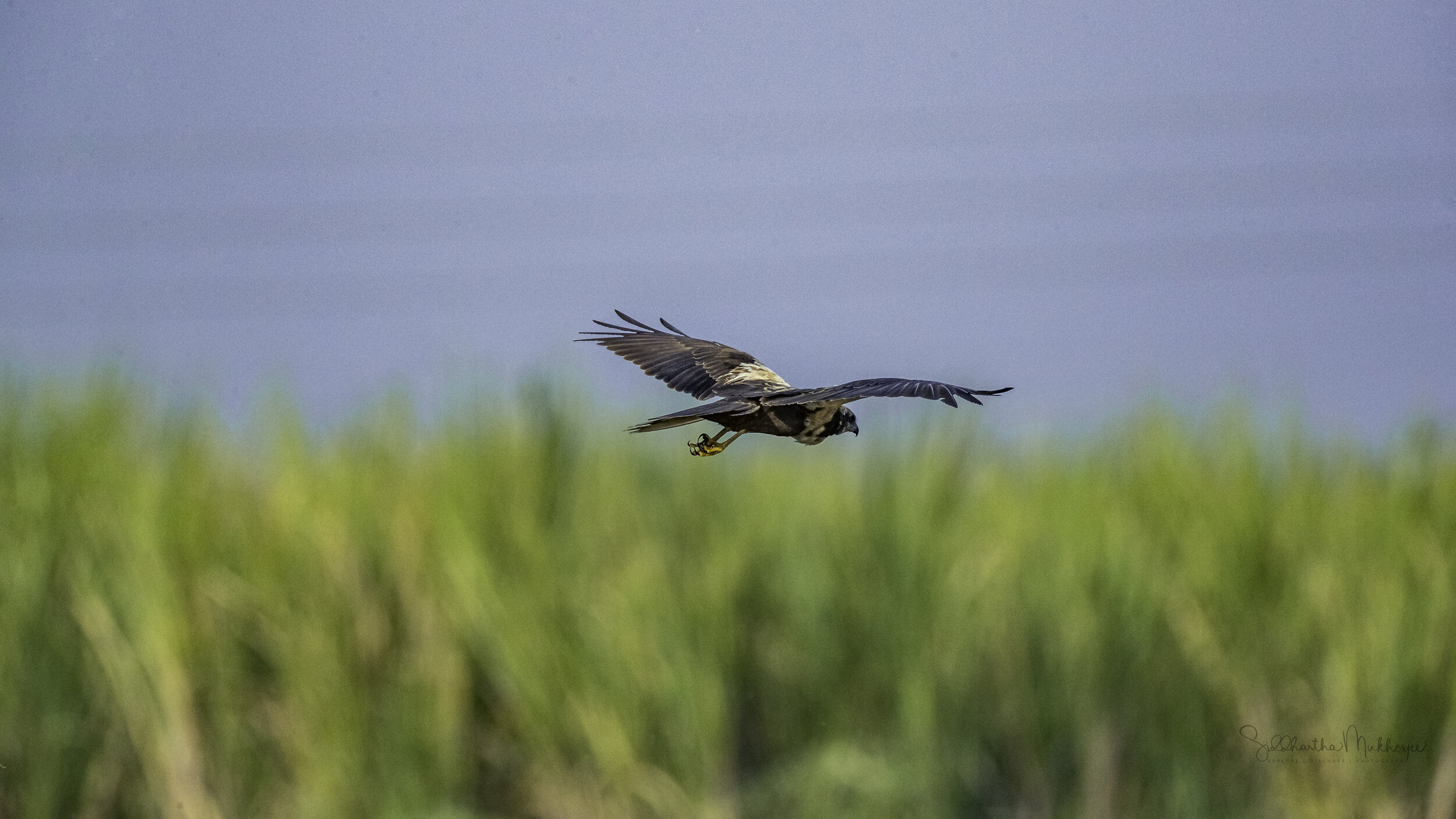
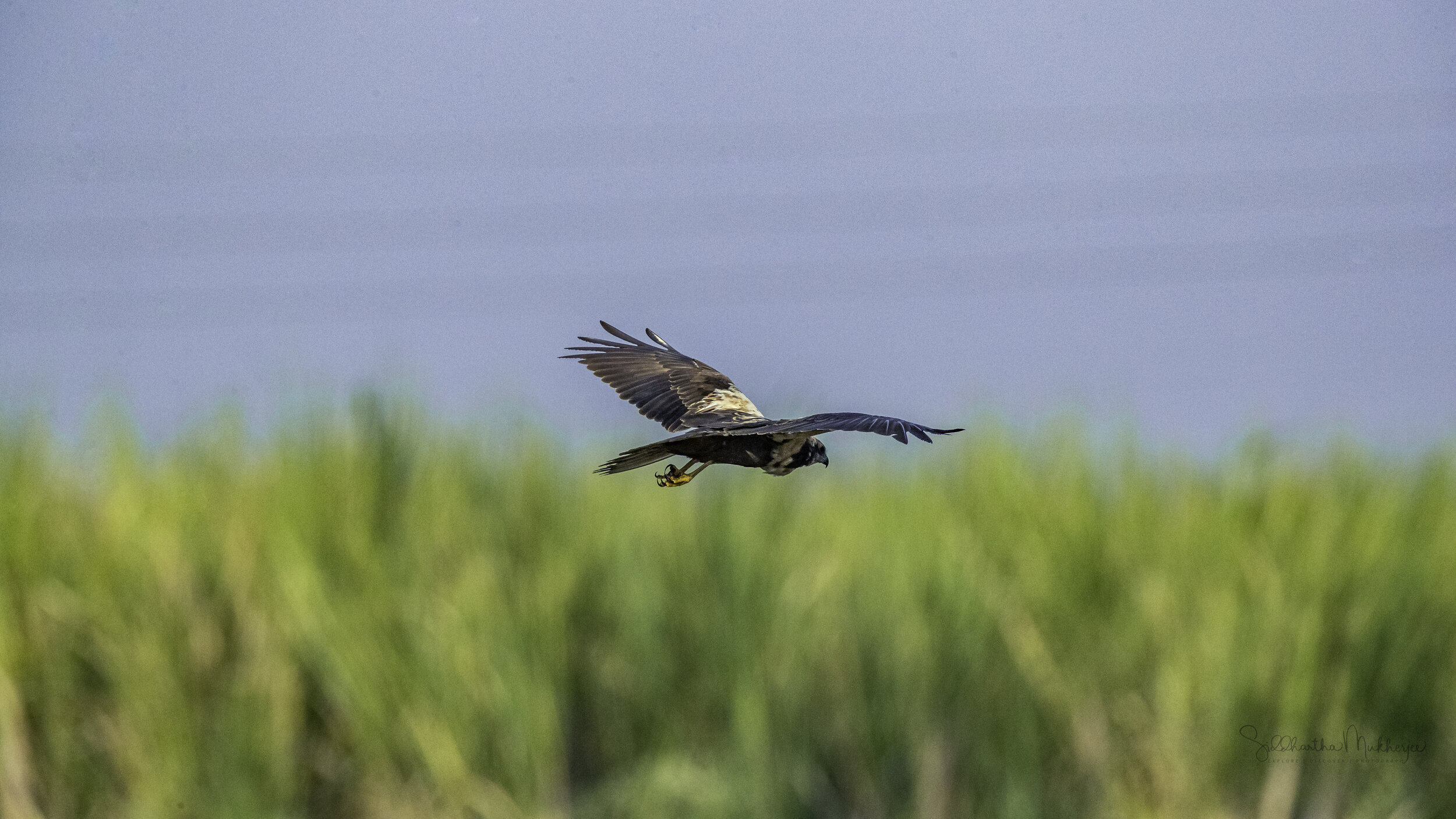
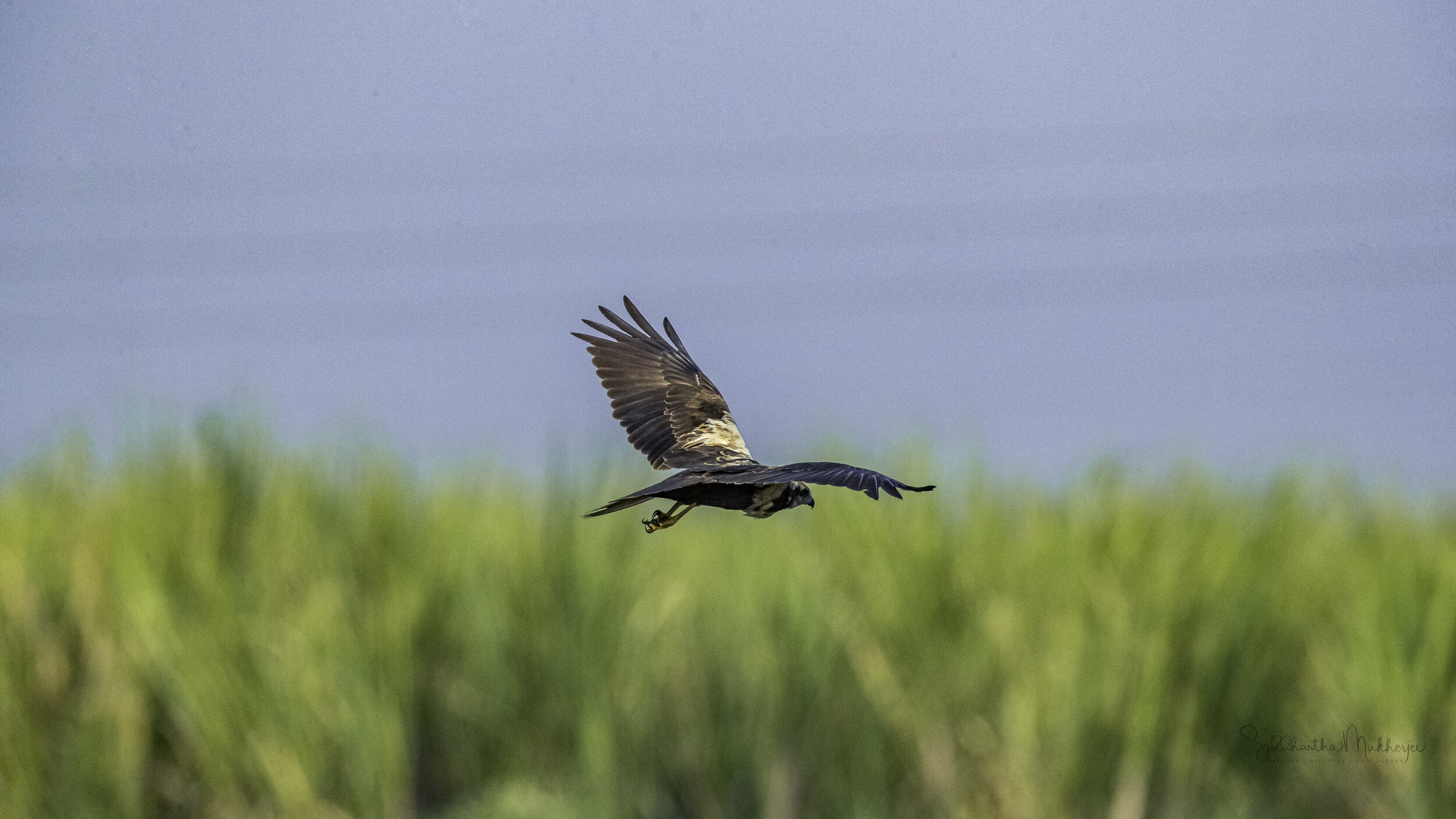
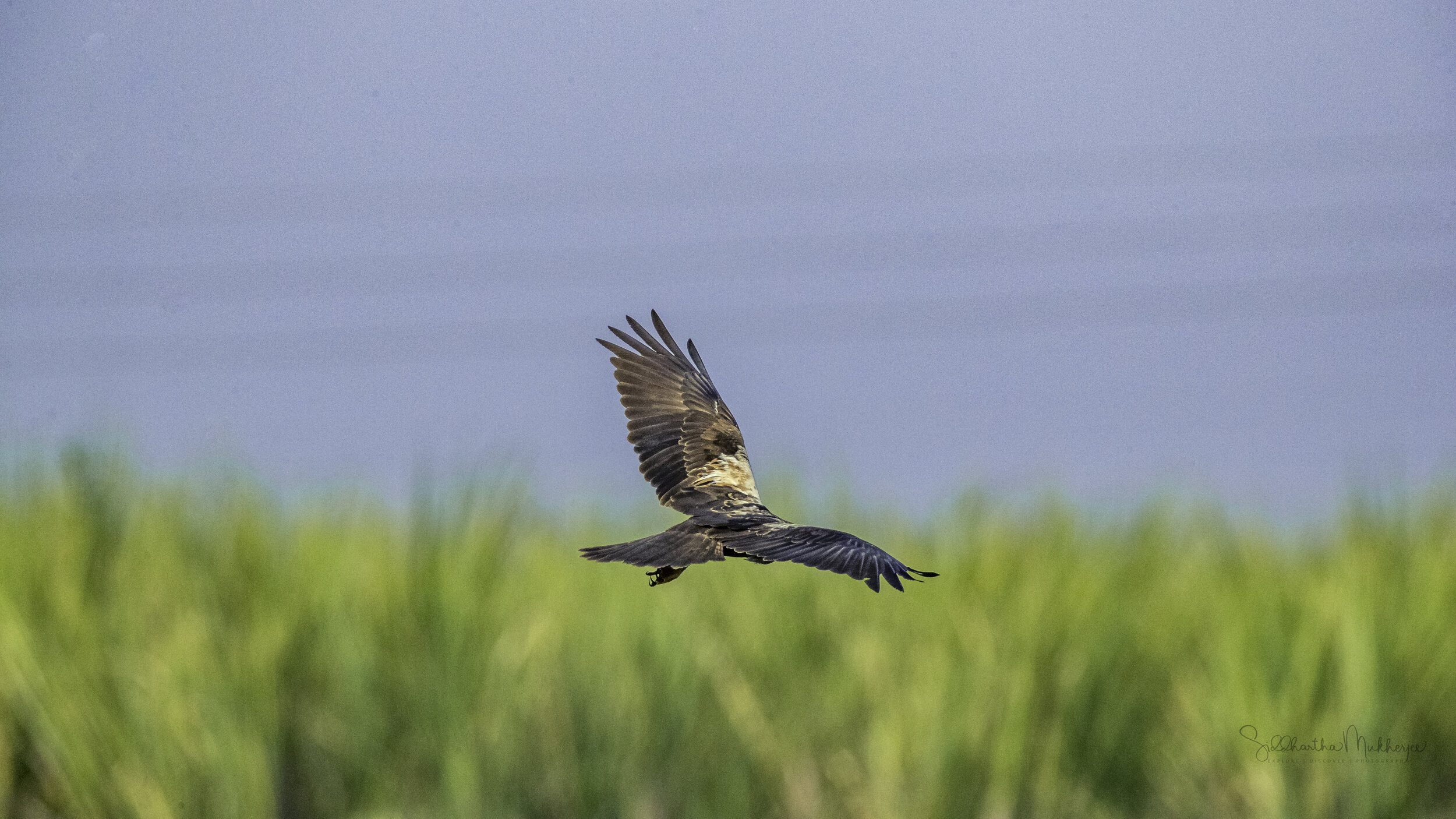
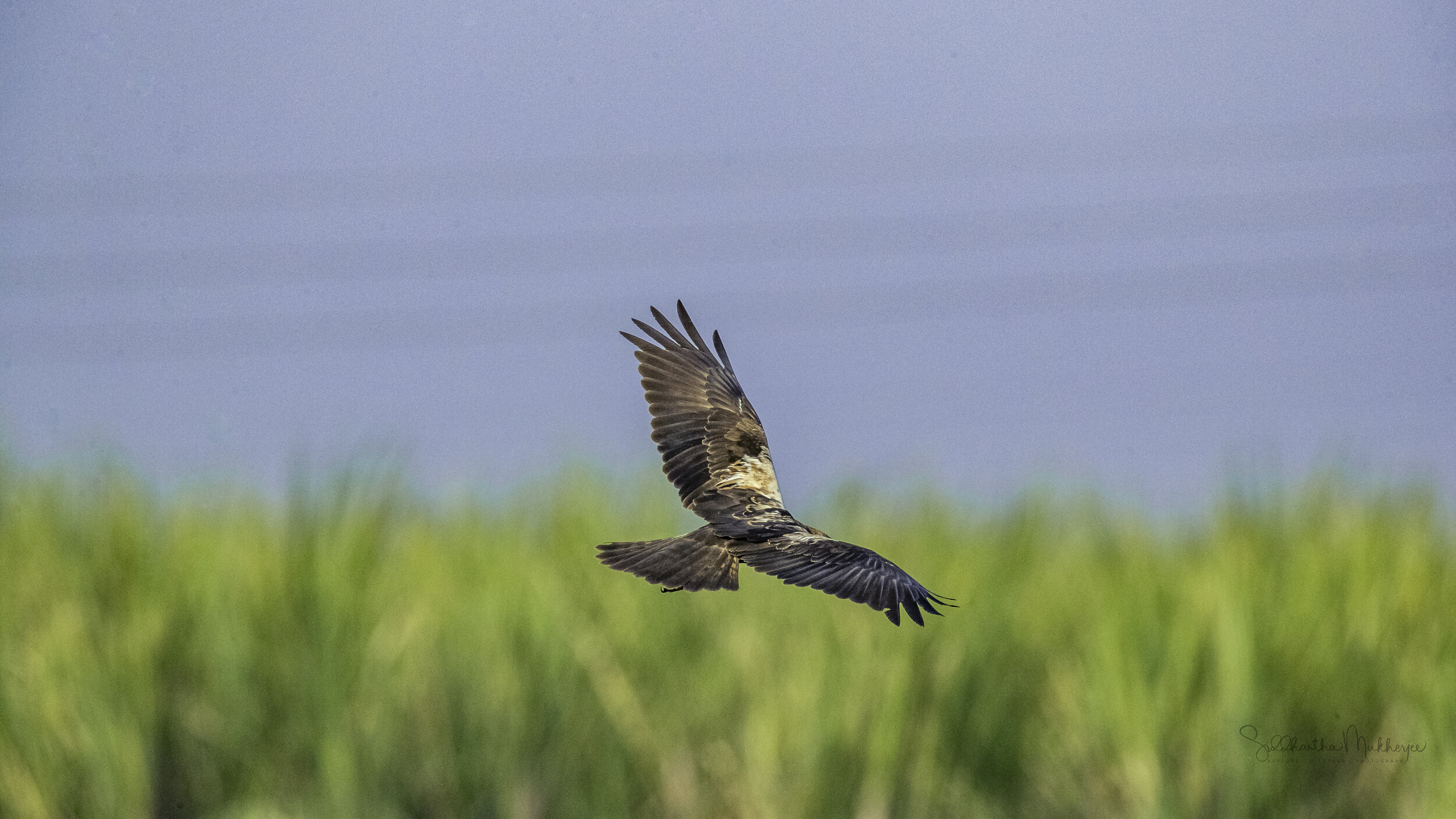

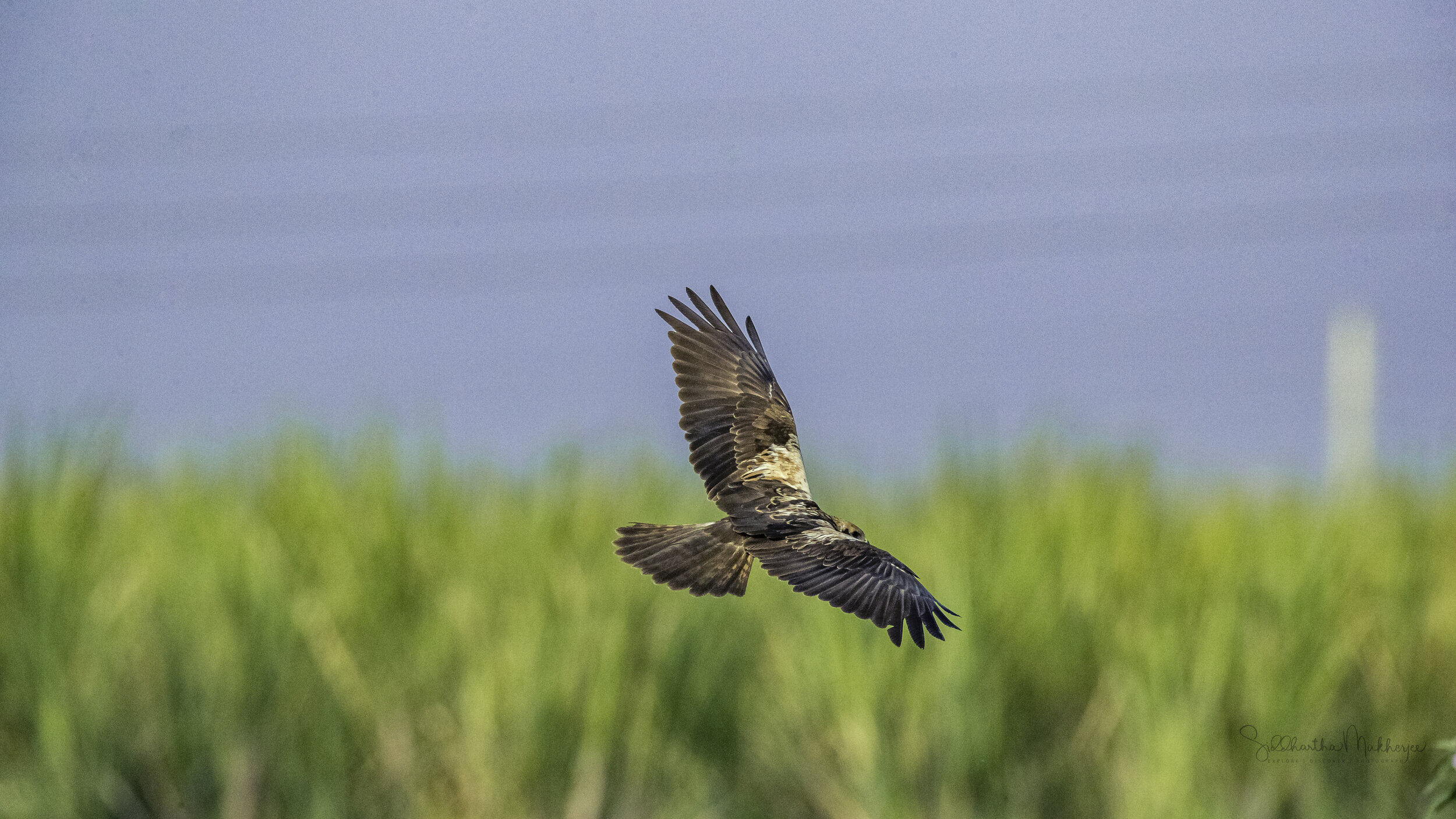
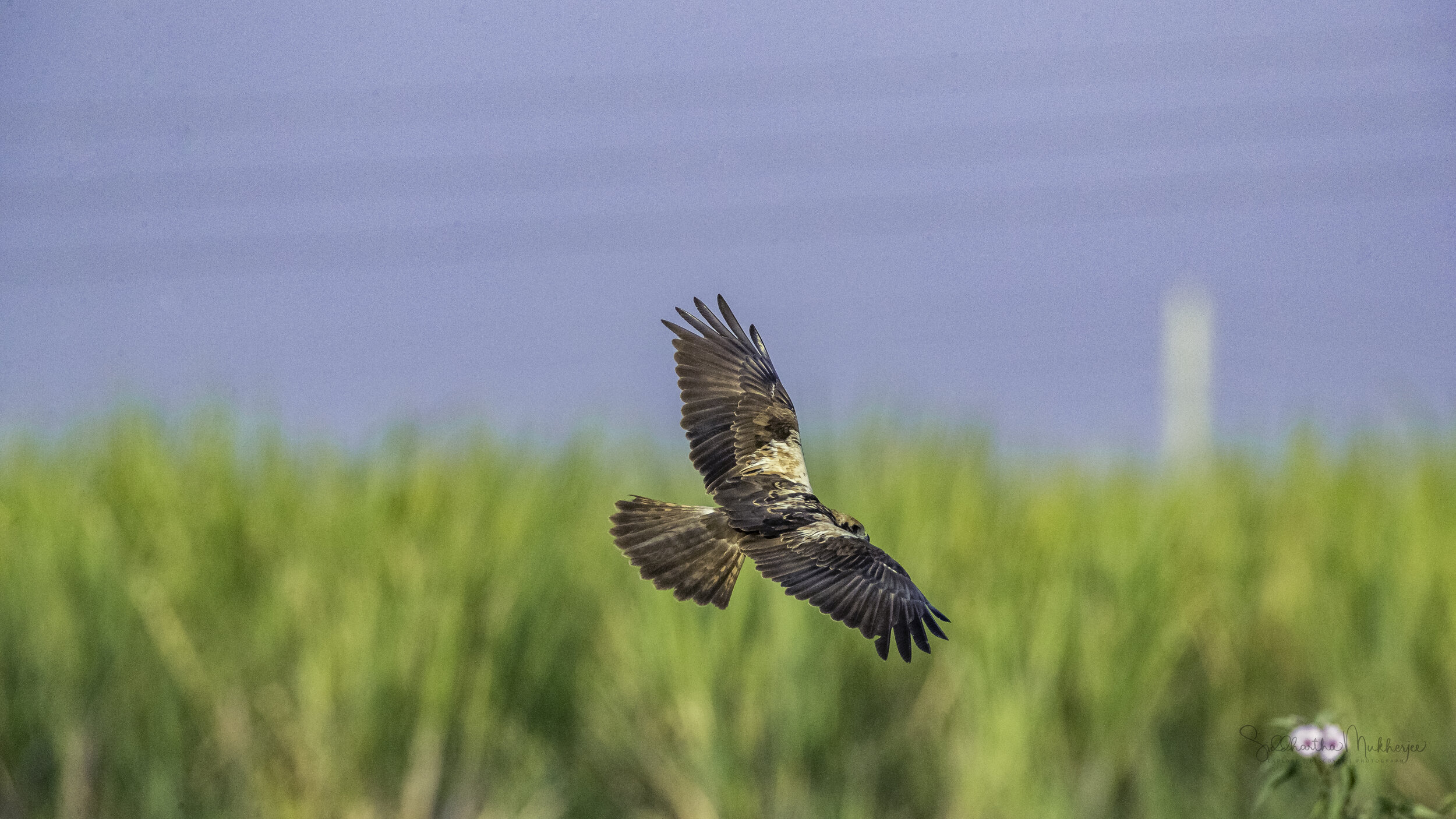
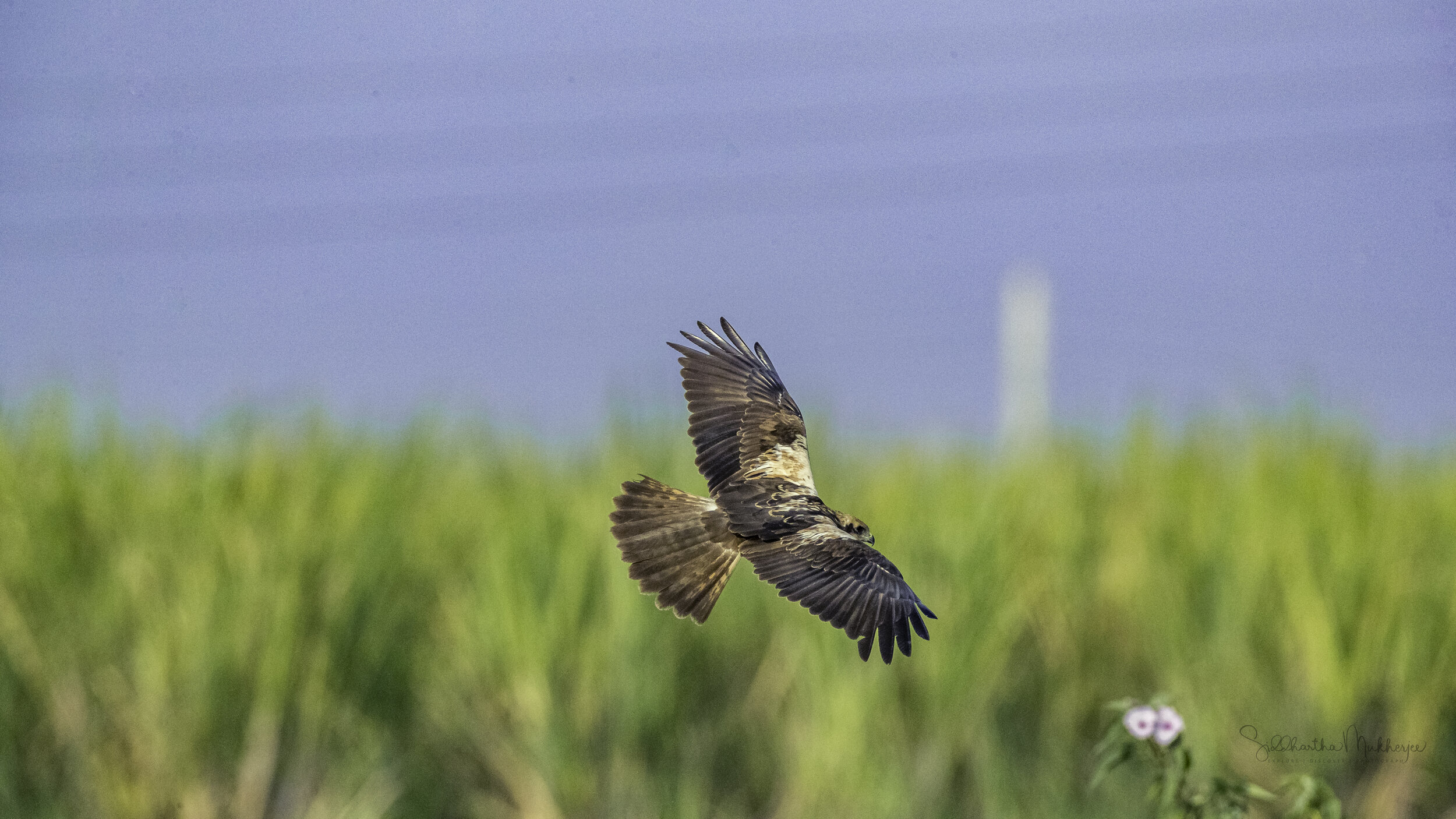
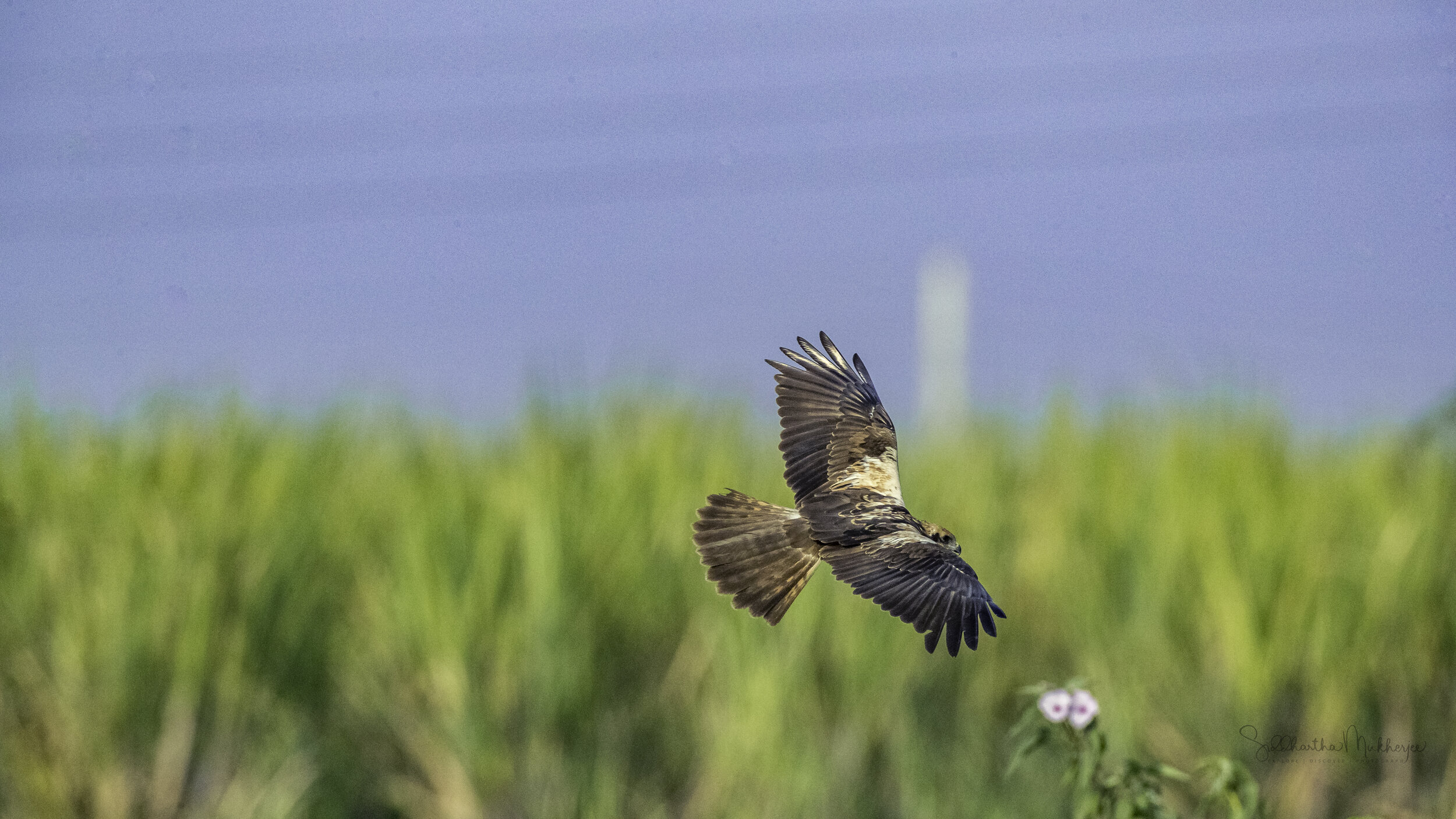
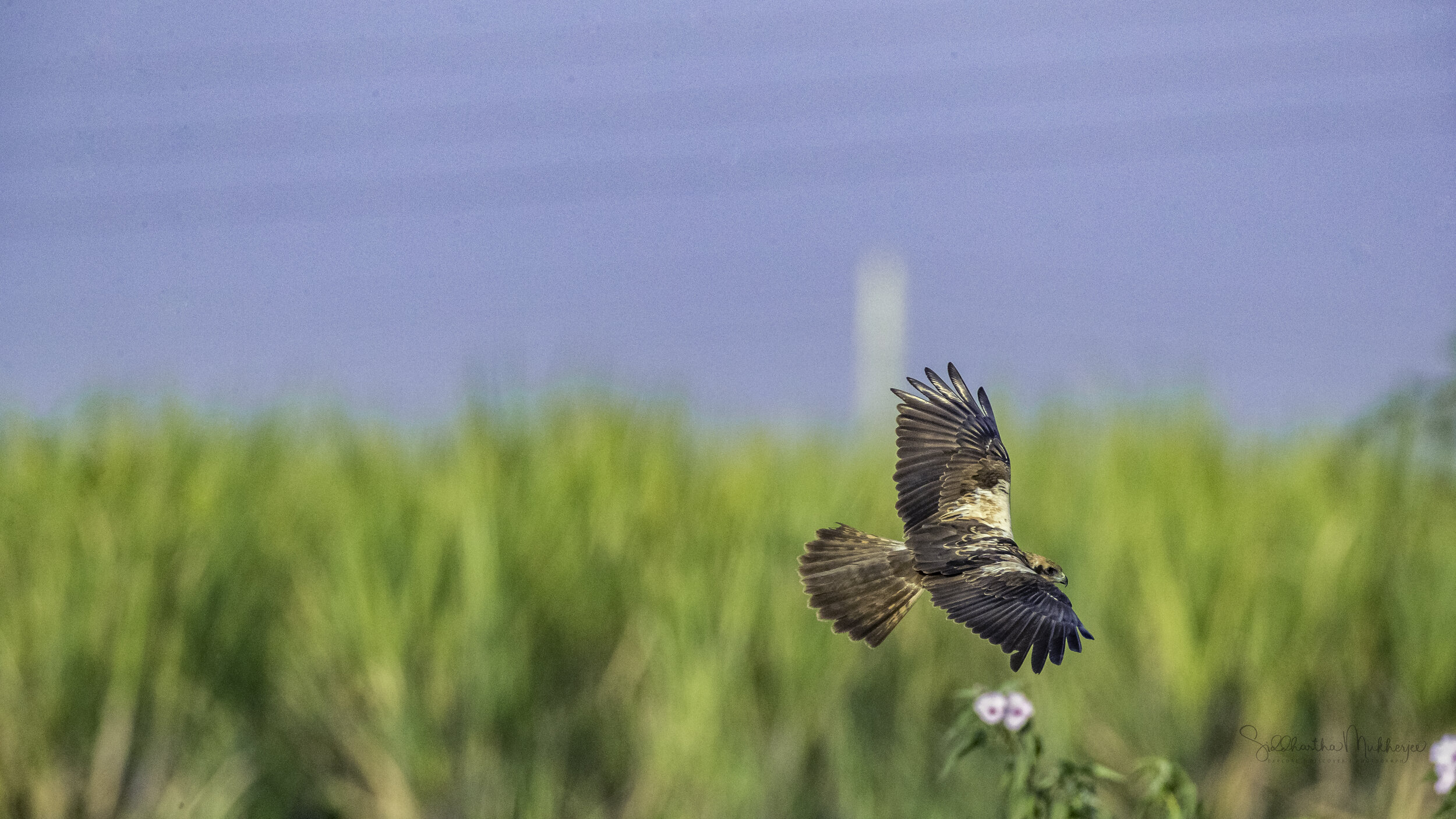
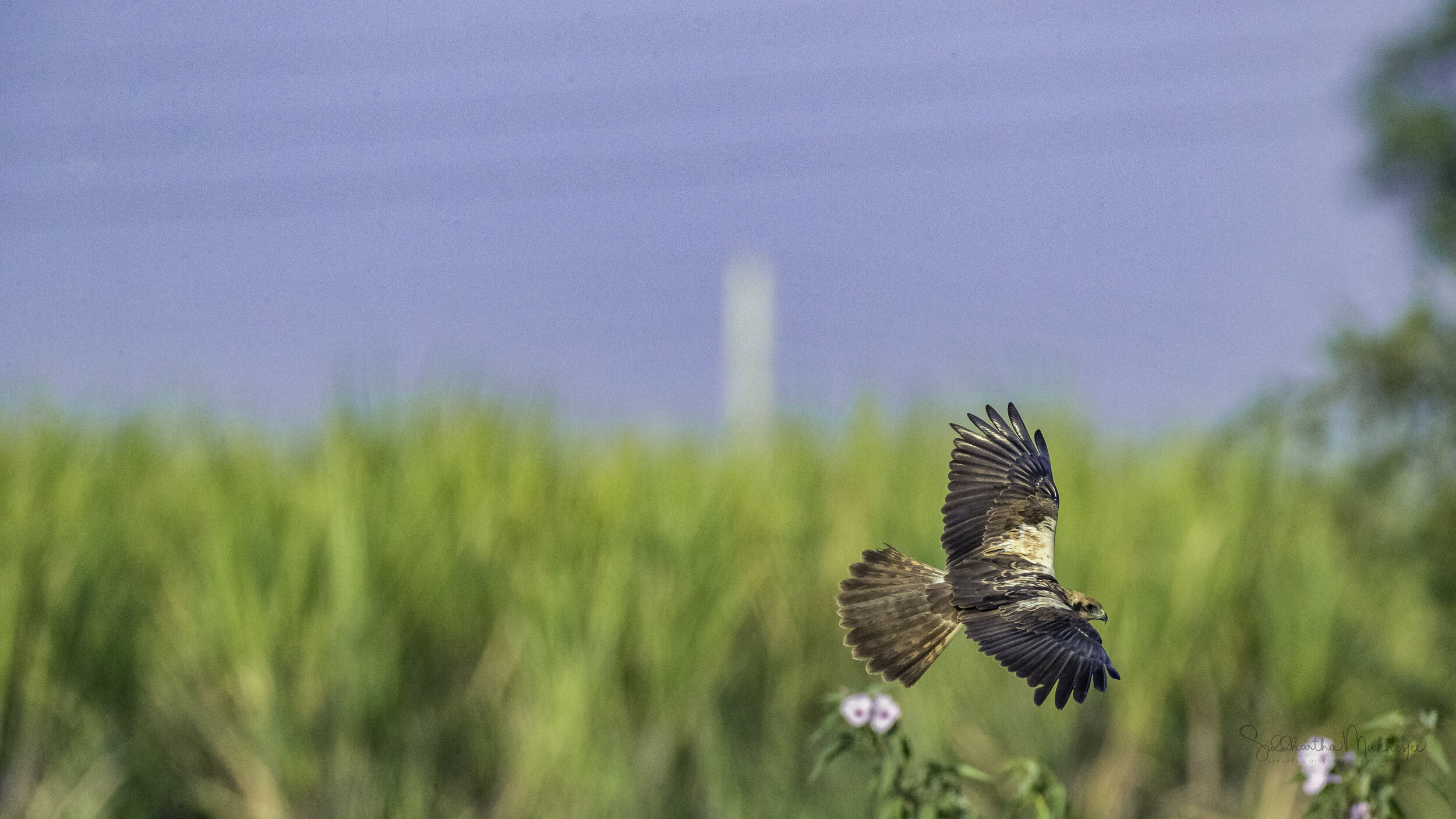
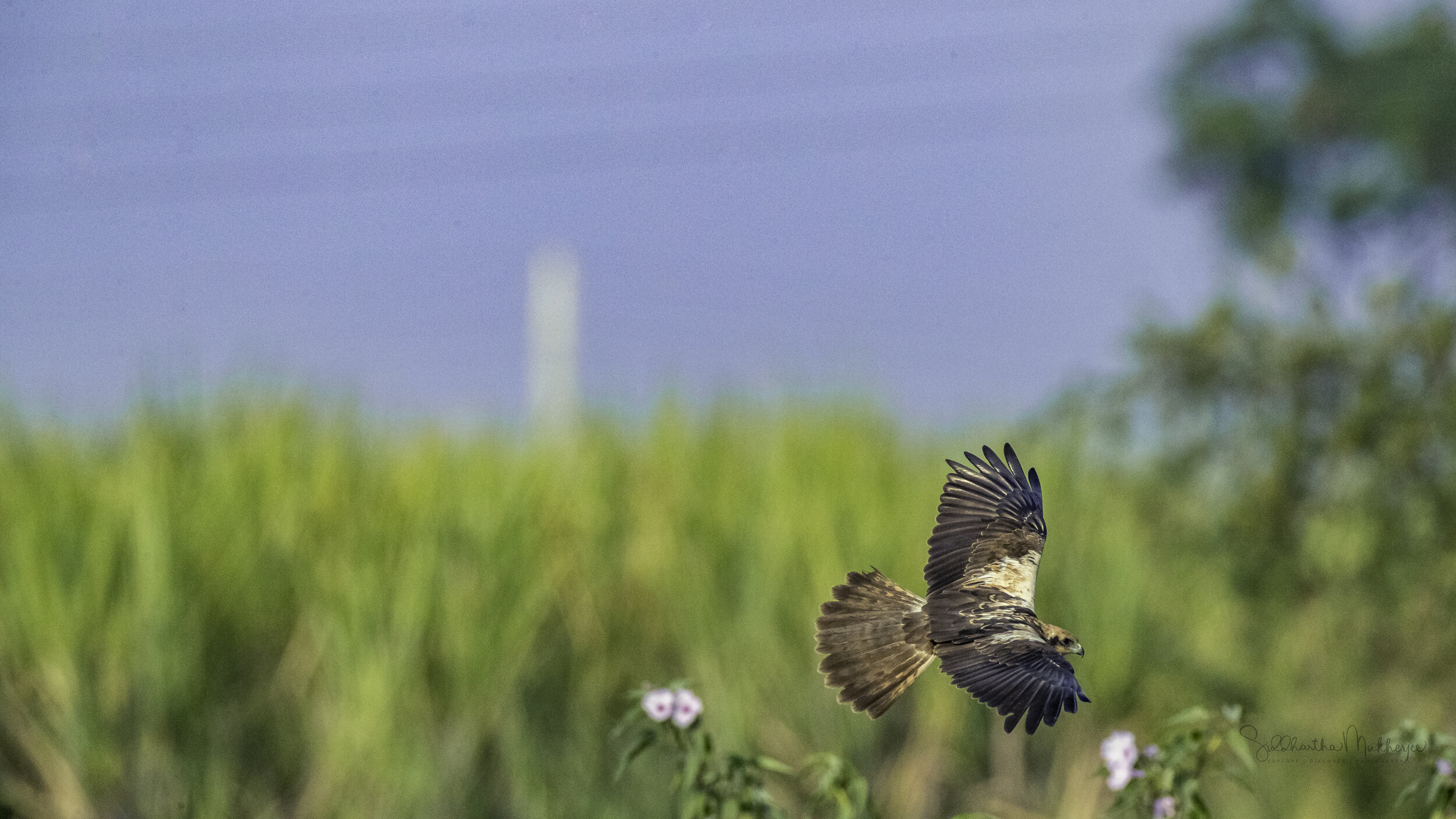
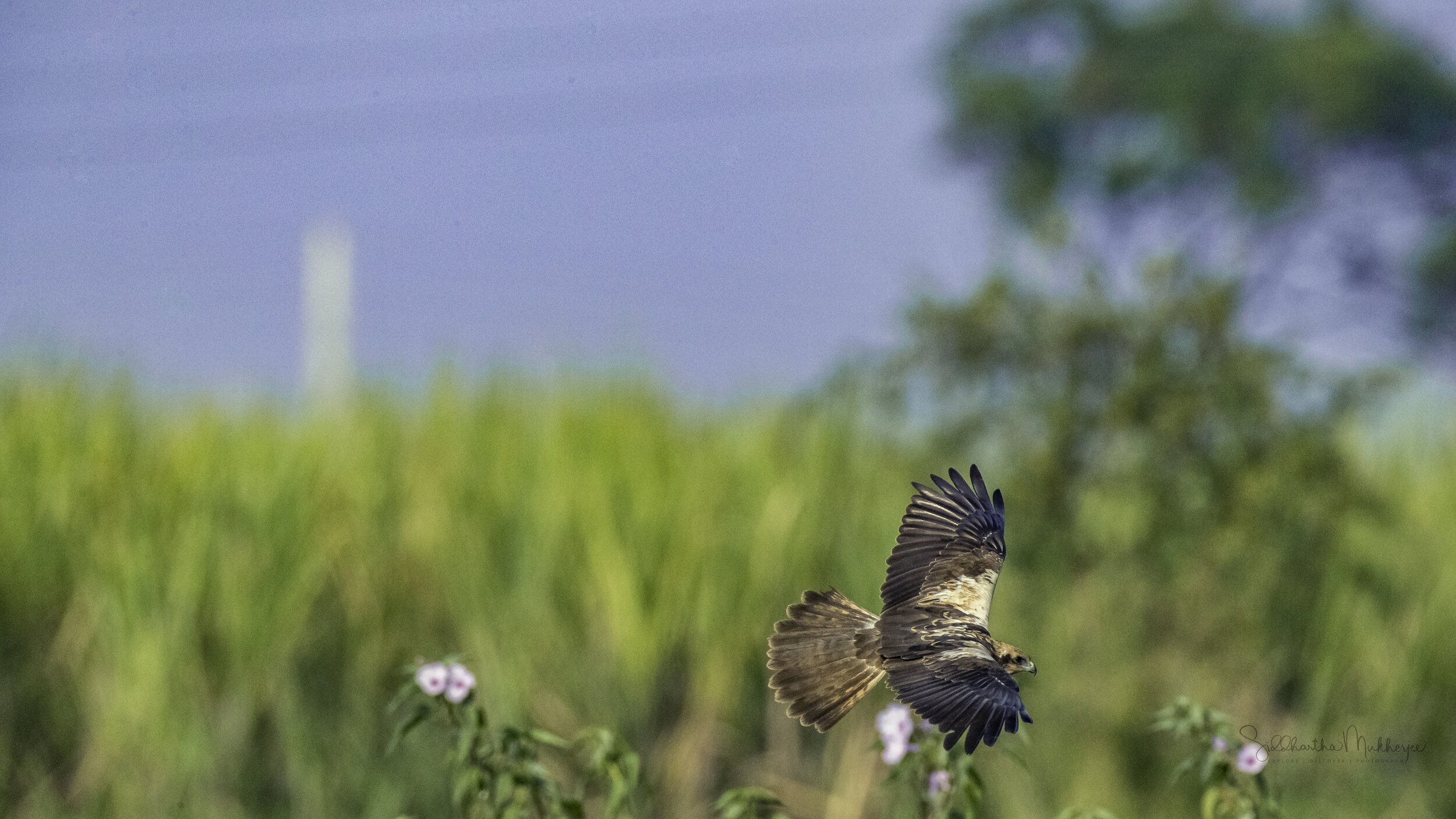
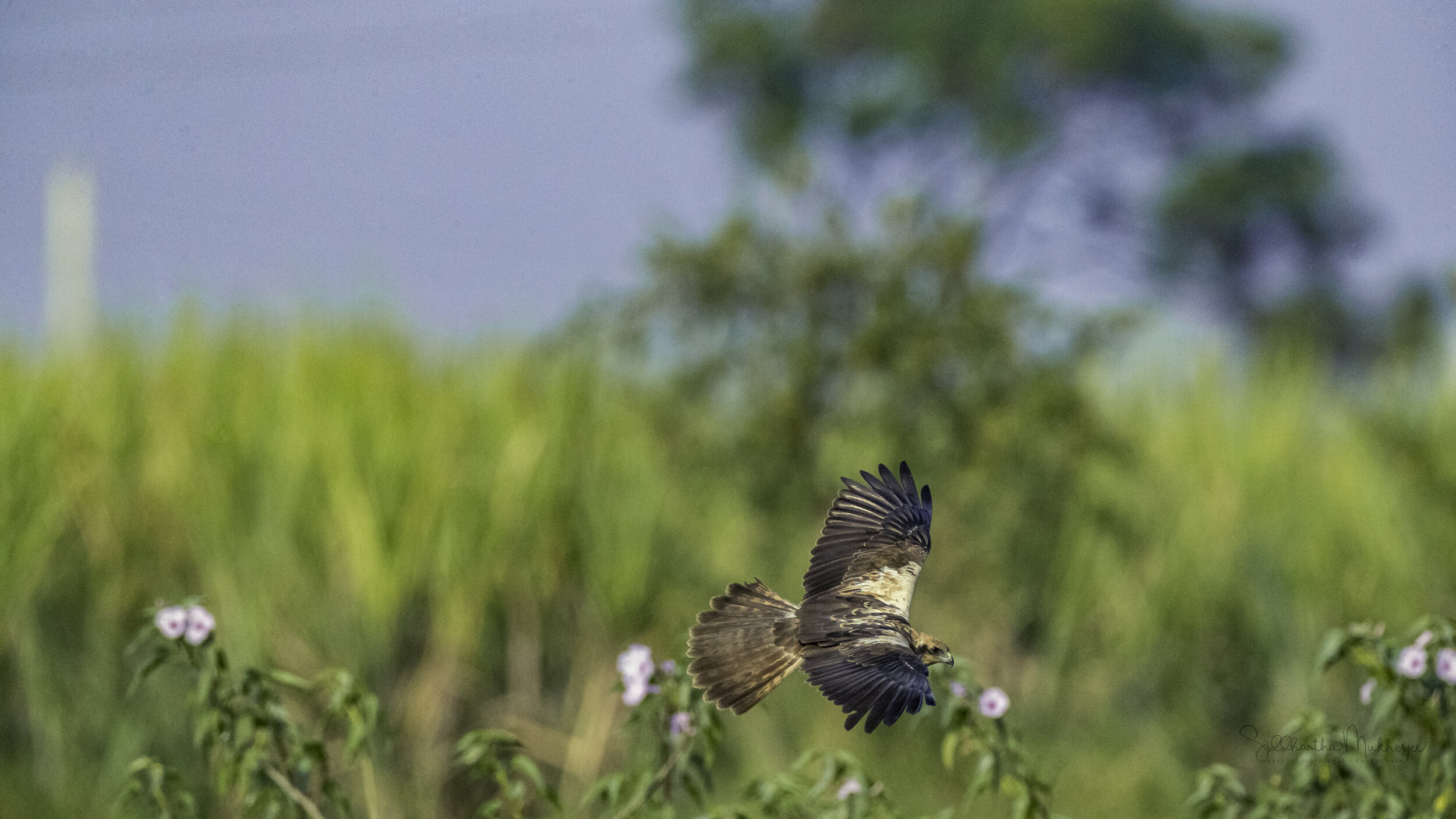
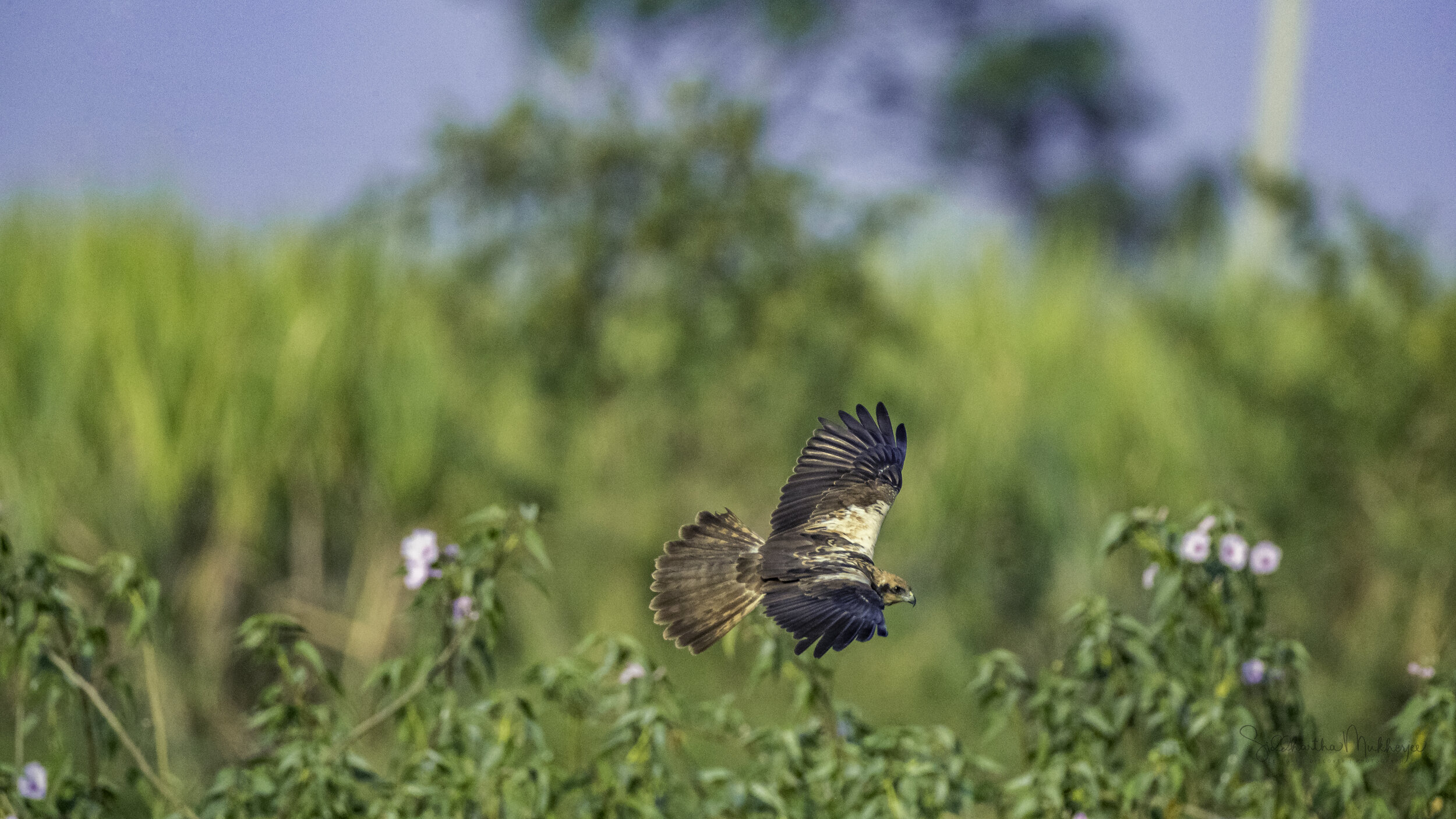
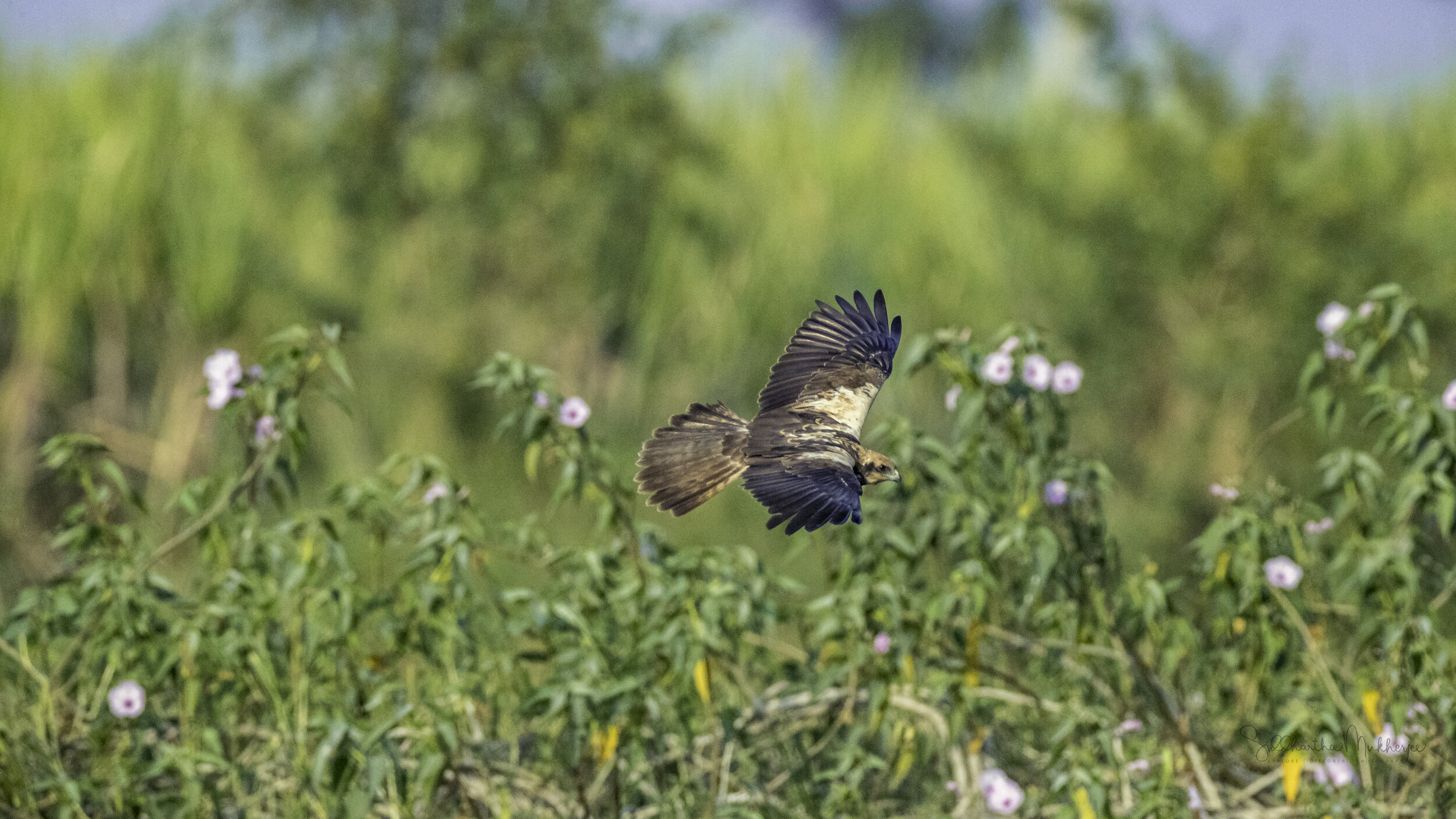
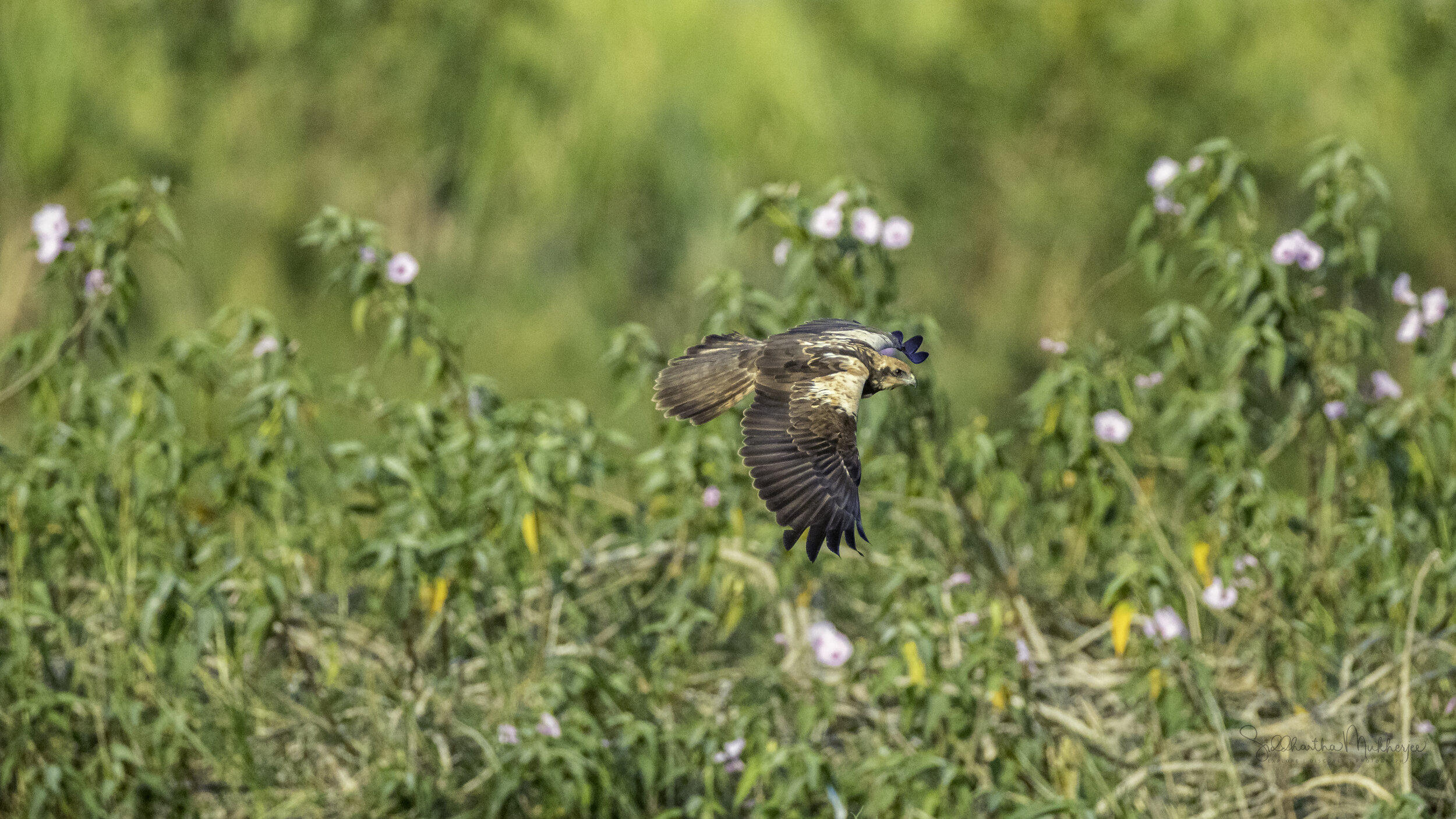
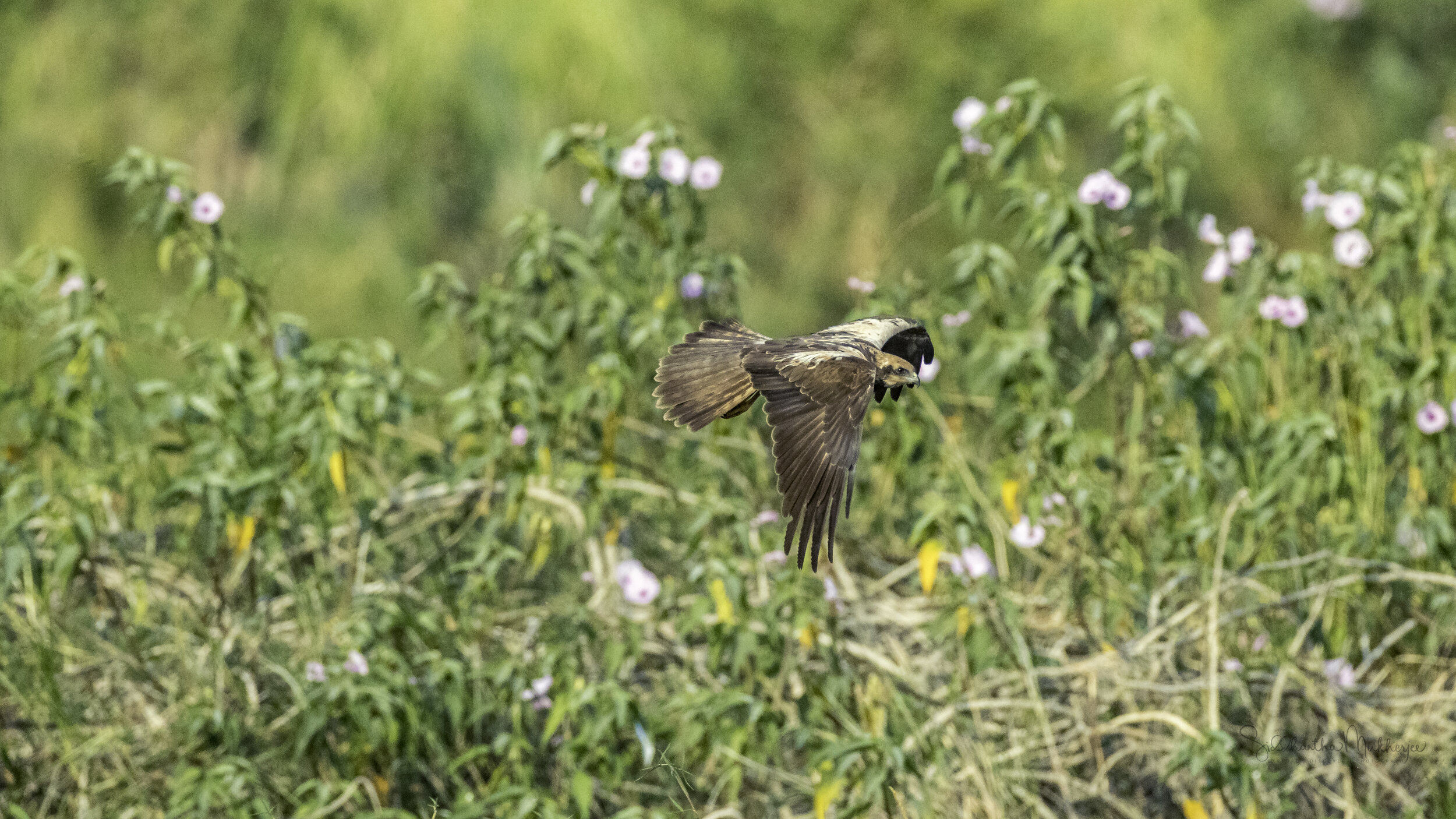
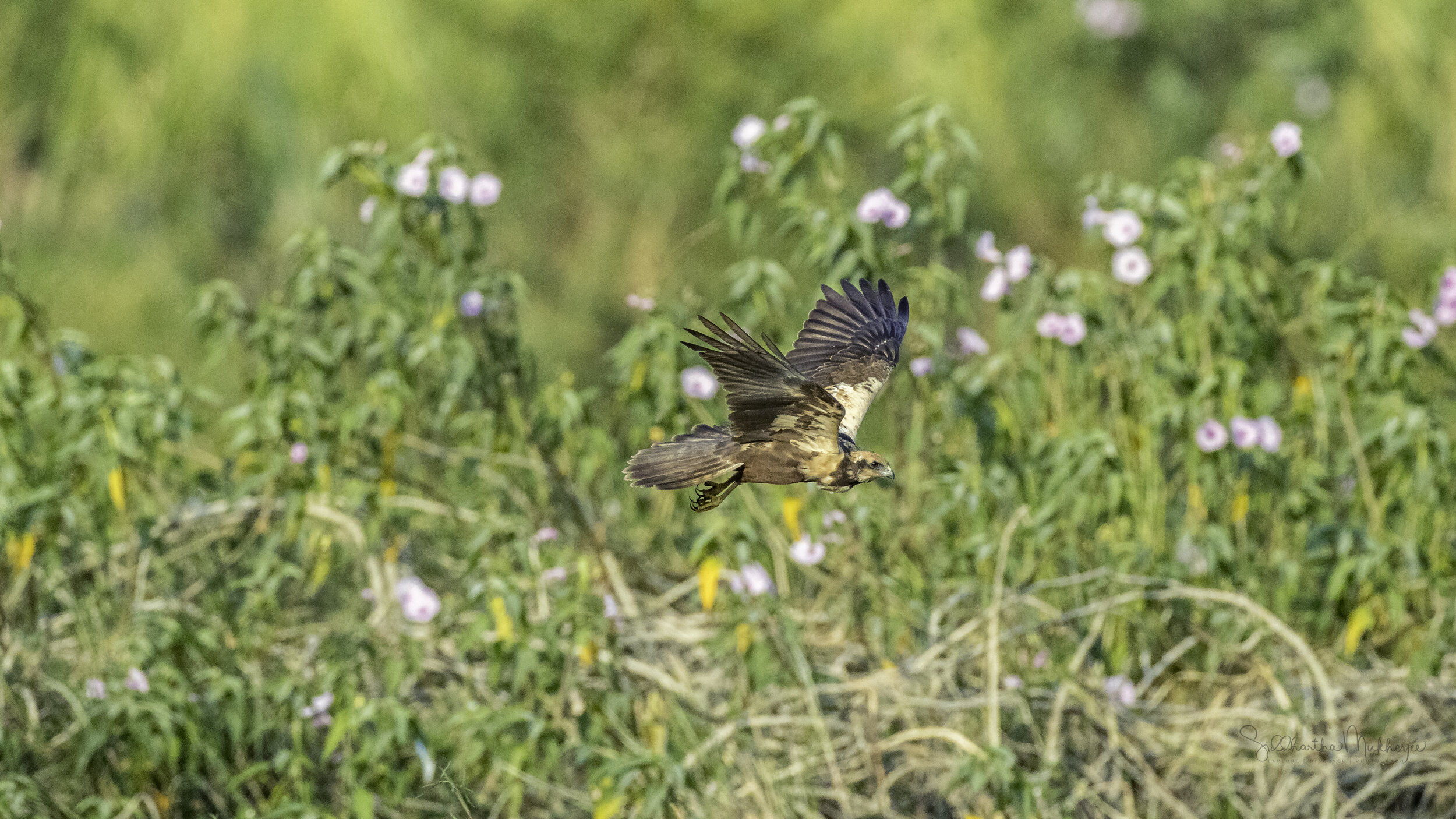
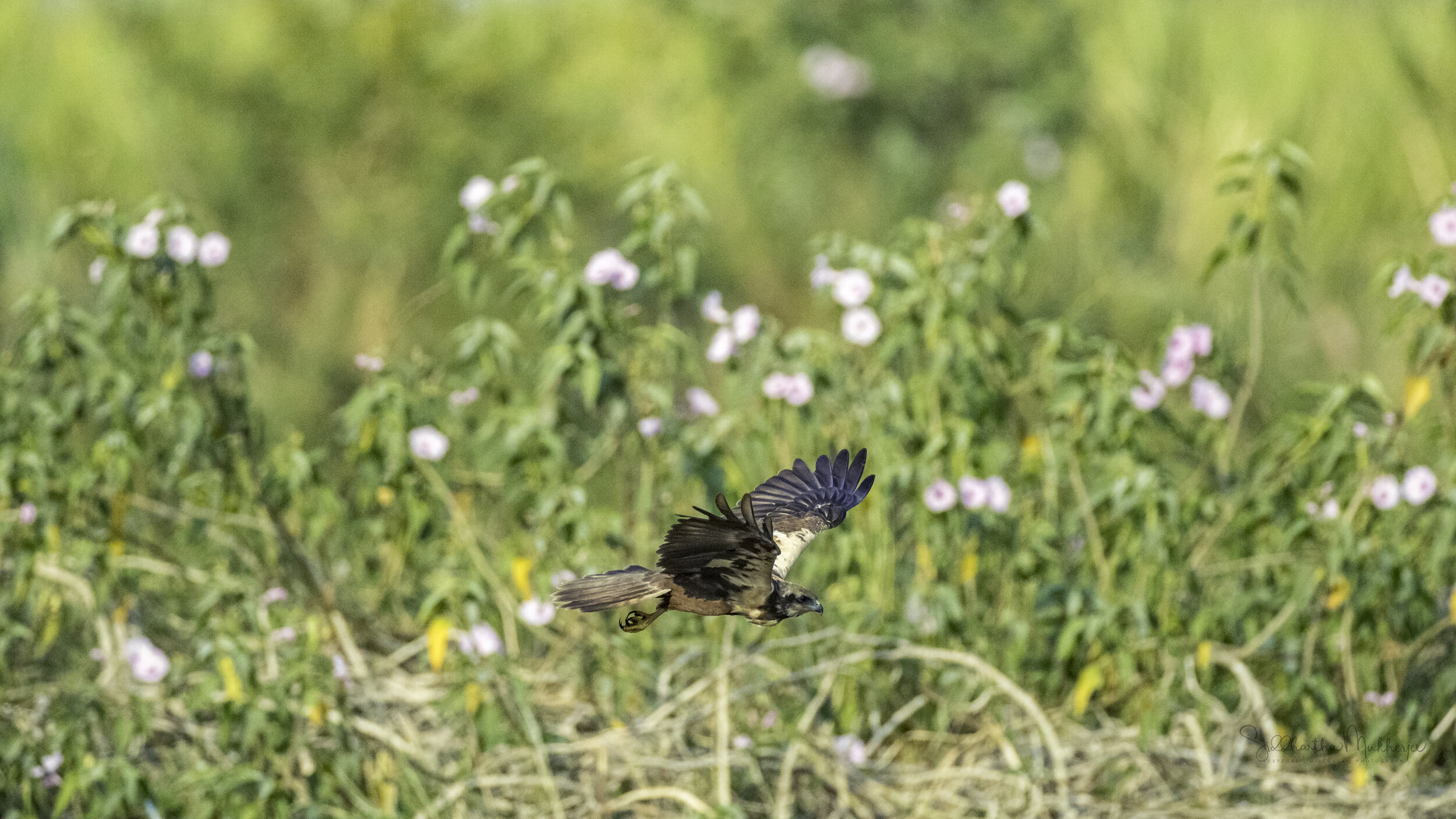
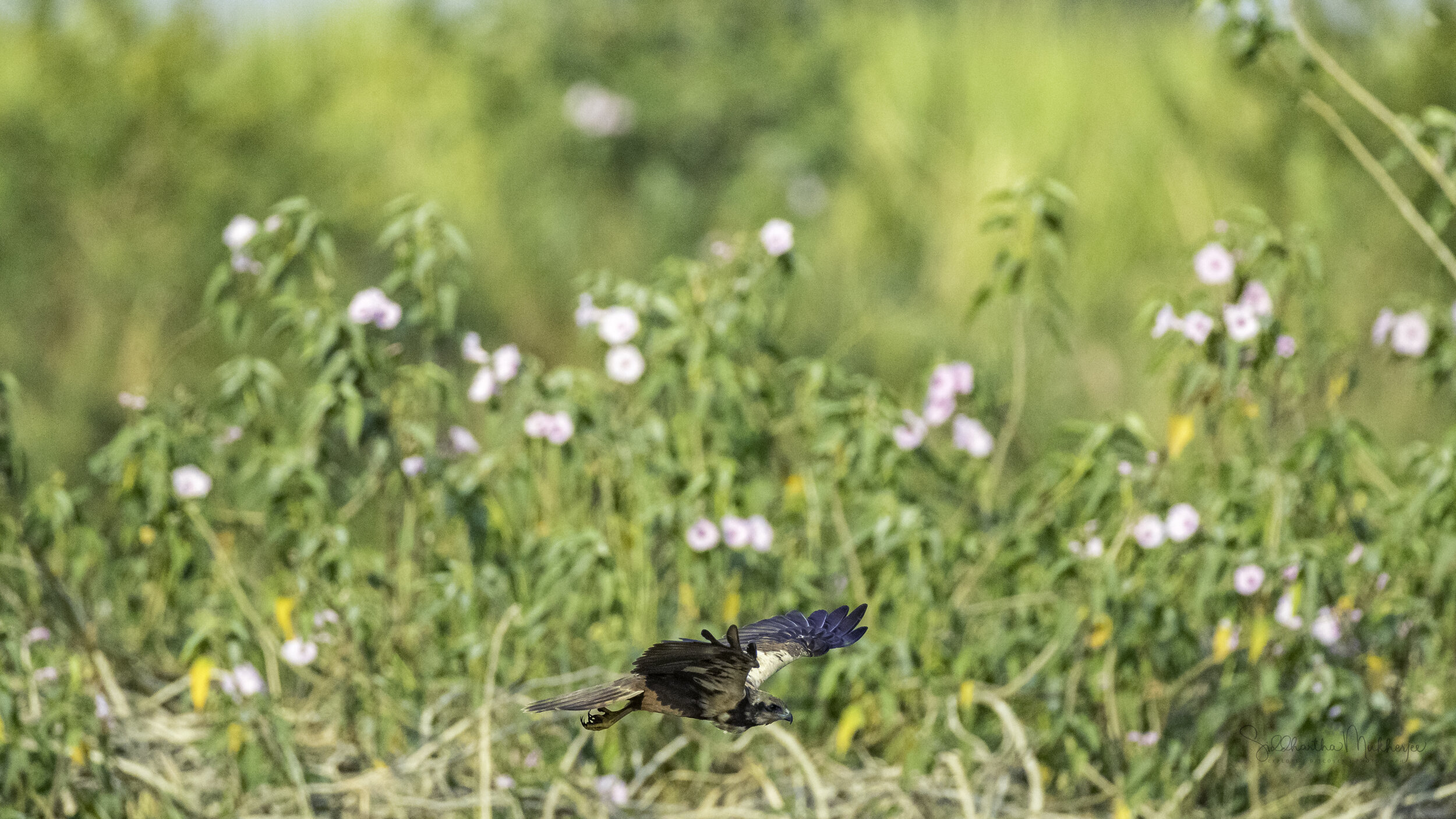
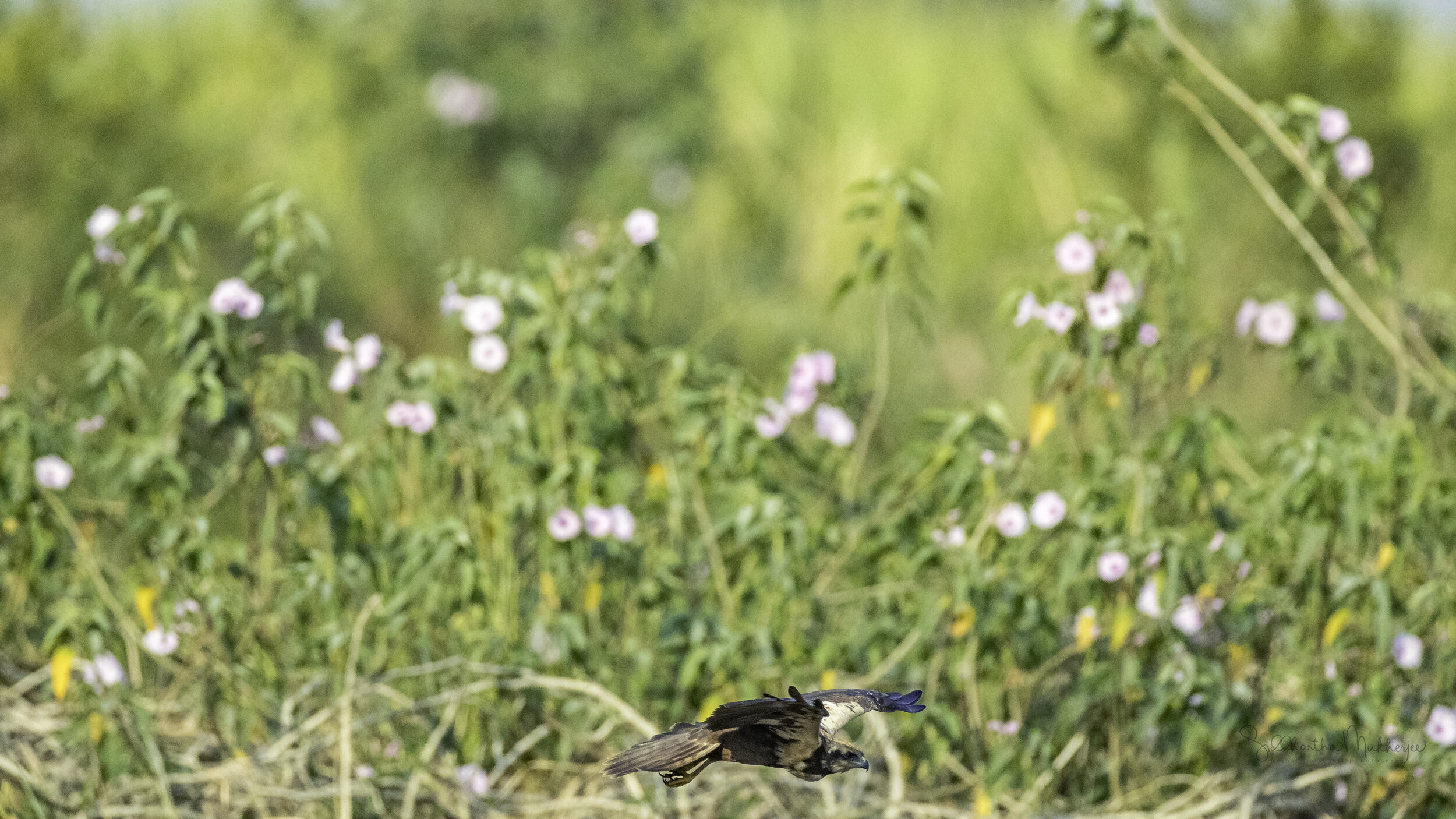
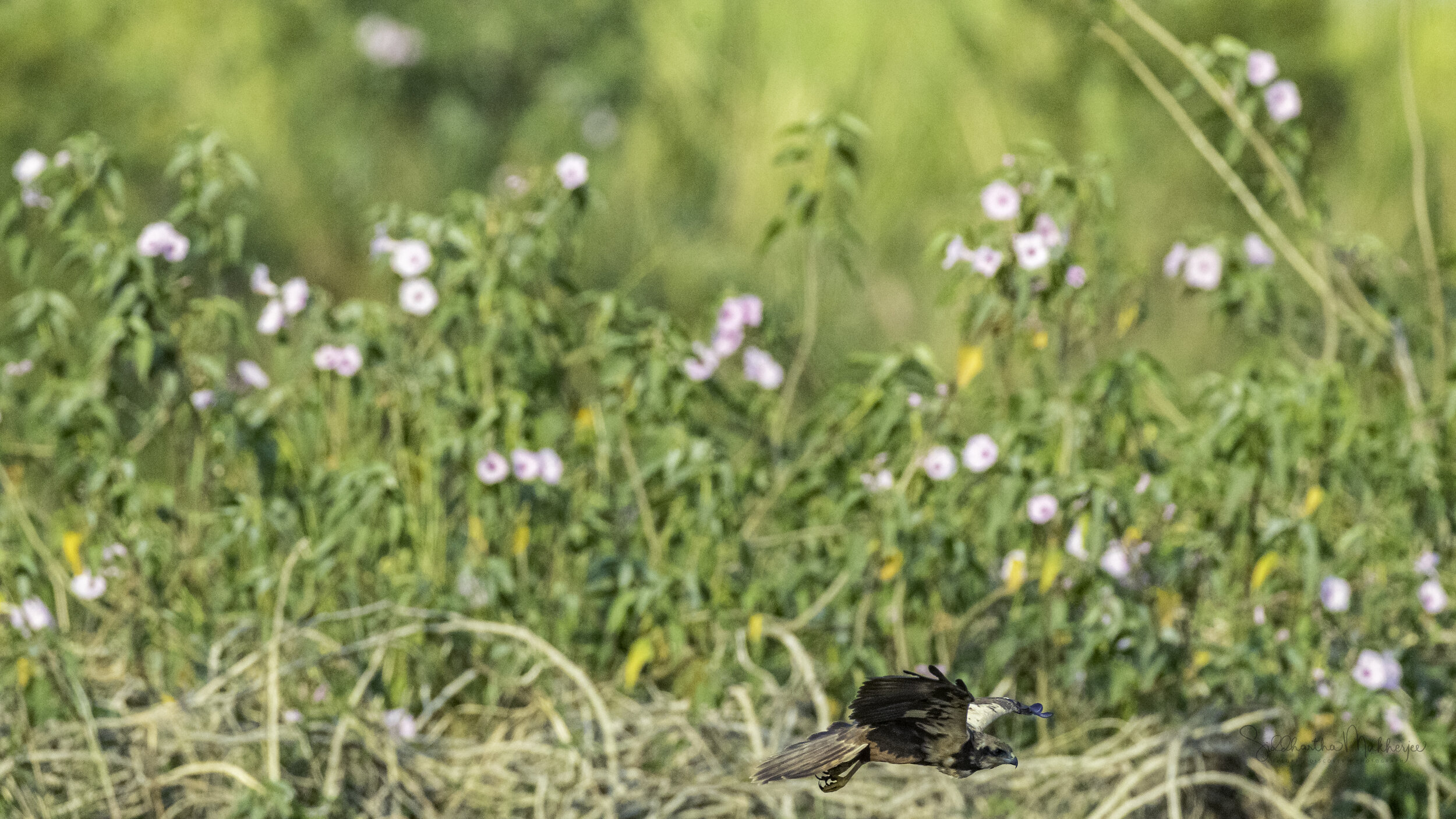
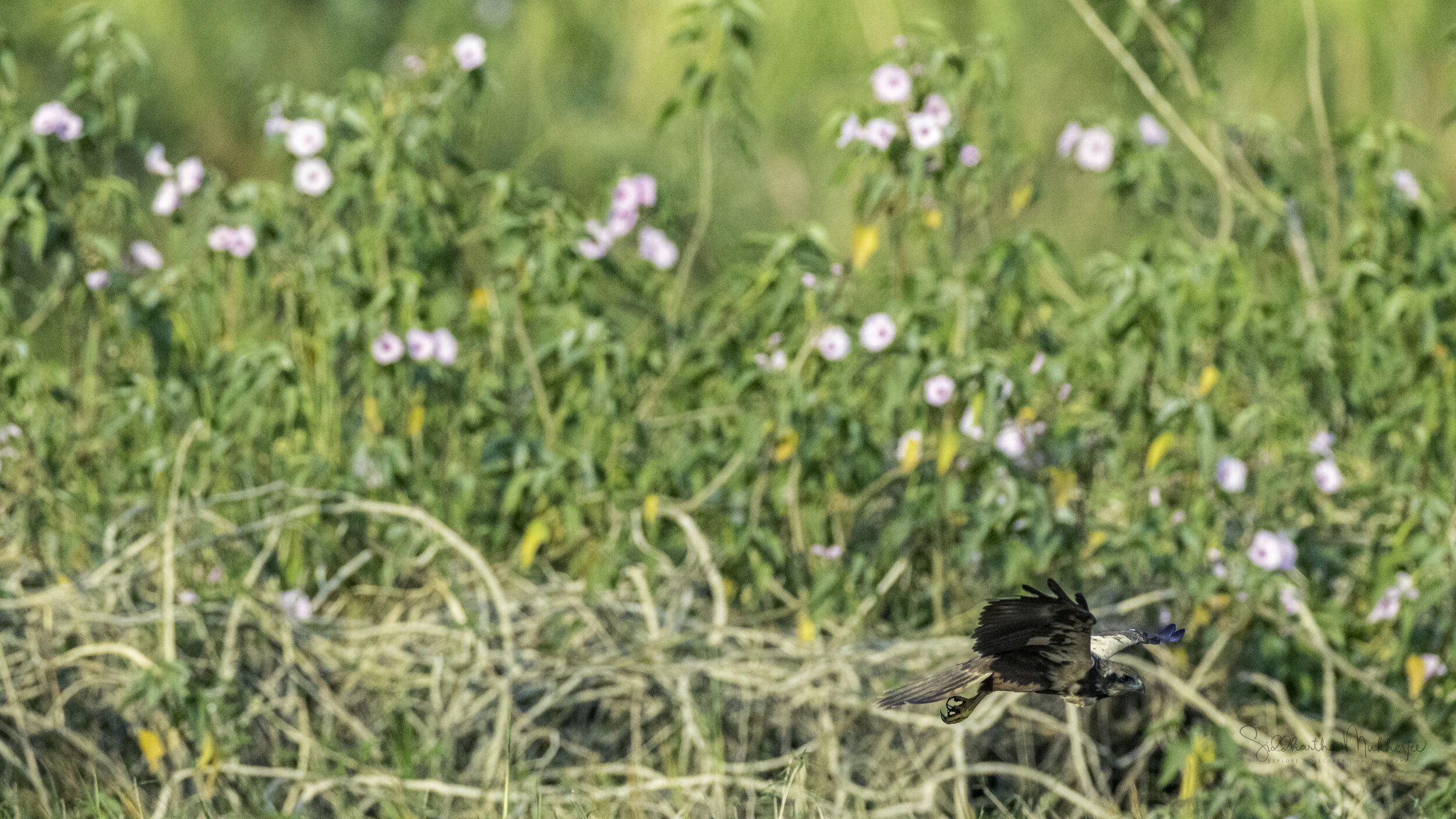
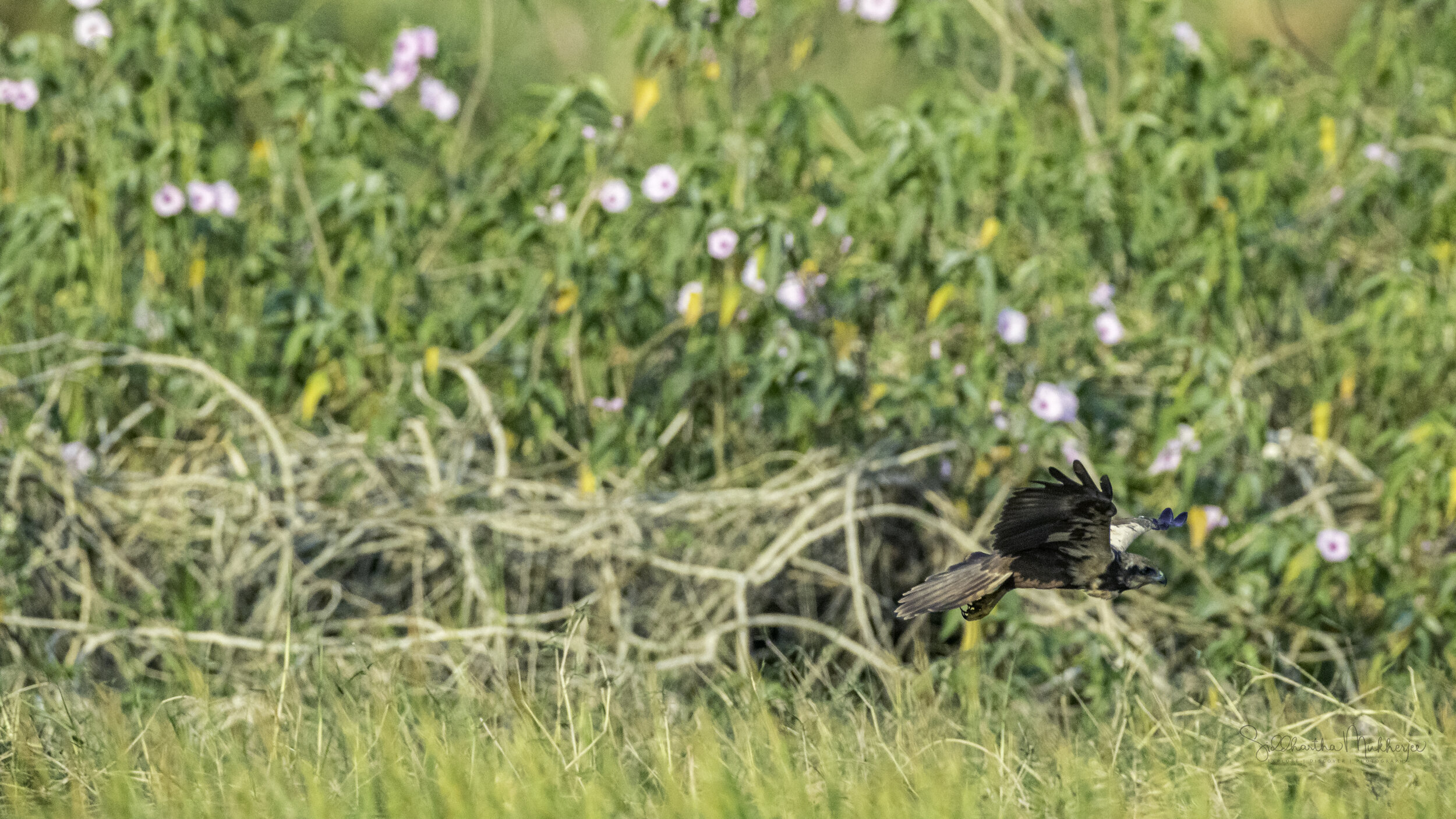


The following were the final moments we spent with this beautiful harrier. It perched on a solitary rock amidst the reeds and gave us a beautiful angle and background to shoot against. Watching and recording it was an absolute pleasure and an honour to be able to get close enough to this shy and skittish predator of the marshes.
The following footage was recorded on 13th February in the far reaches of the Ujani Dam. The footage is quite shaky because of the roll of our boat on the waters and there was a fair bit of wind adding to the mayhem. What you see here is what I could salvage from the considerable shake and seemed to be the steadiest parts of the video.
It is truly an honour and privilege to be able to get close to and watch these beautiful birds of prey. Hopefully sometime again in the future I will be able to get here and watch him again.
Related Posts

